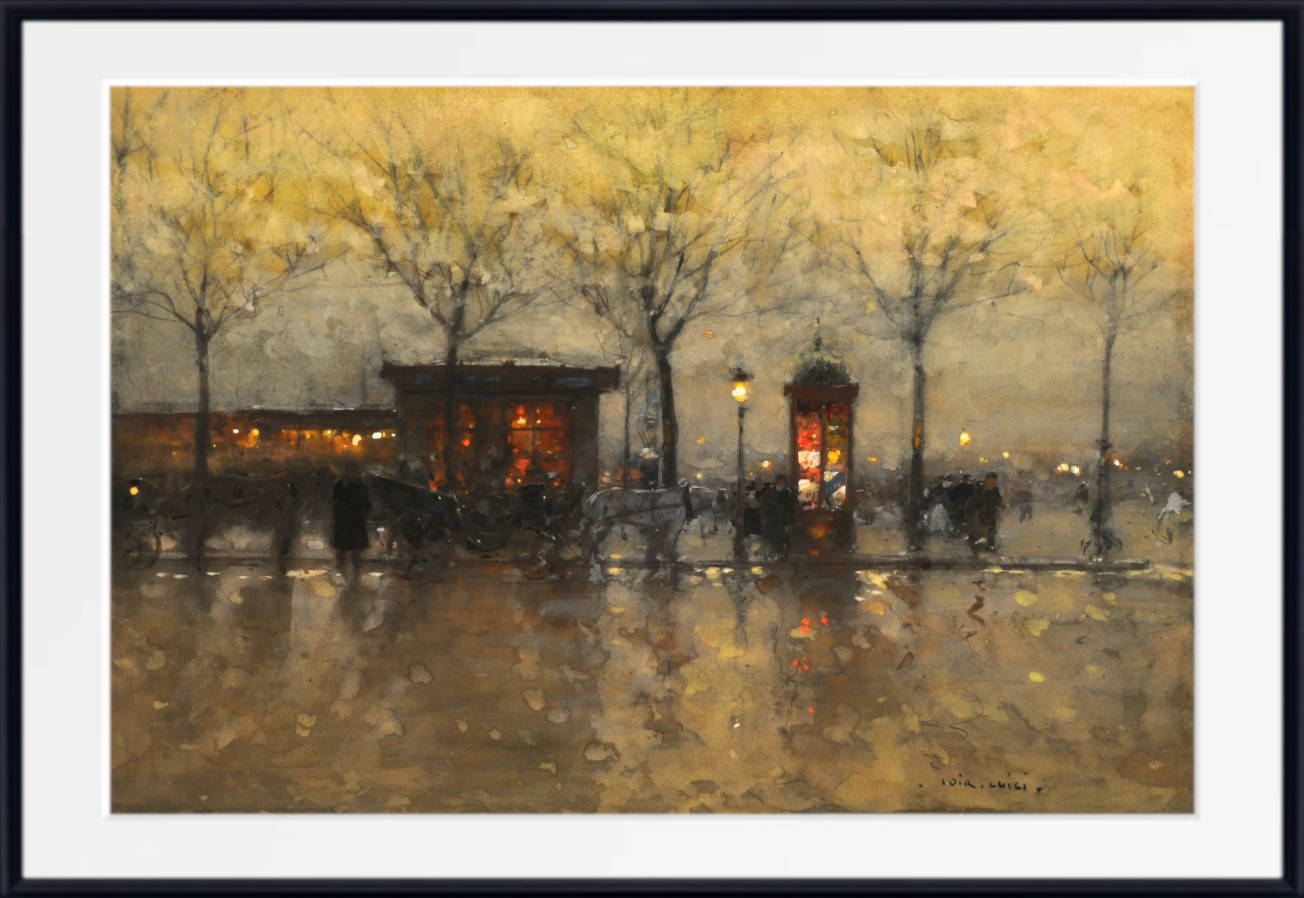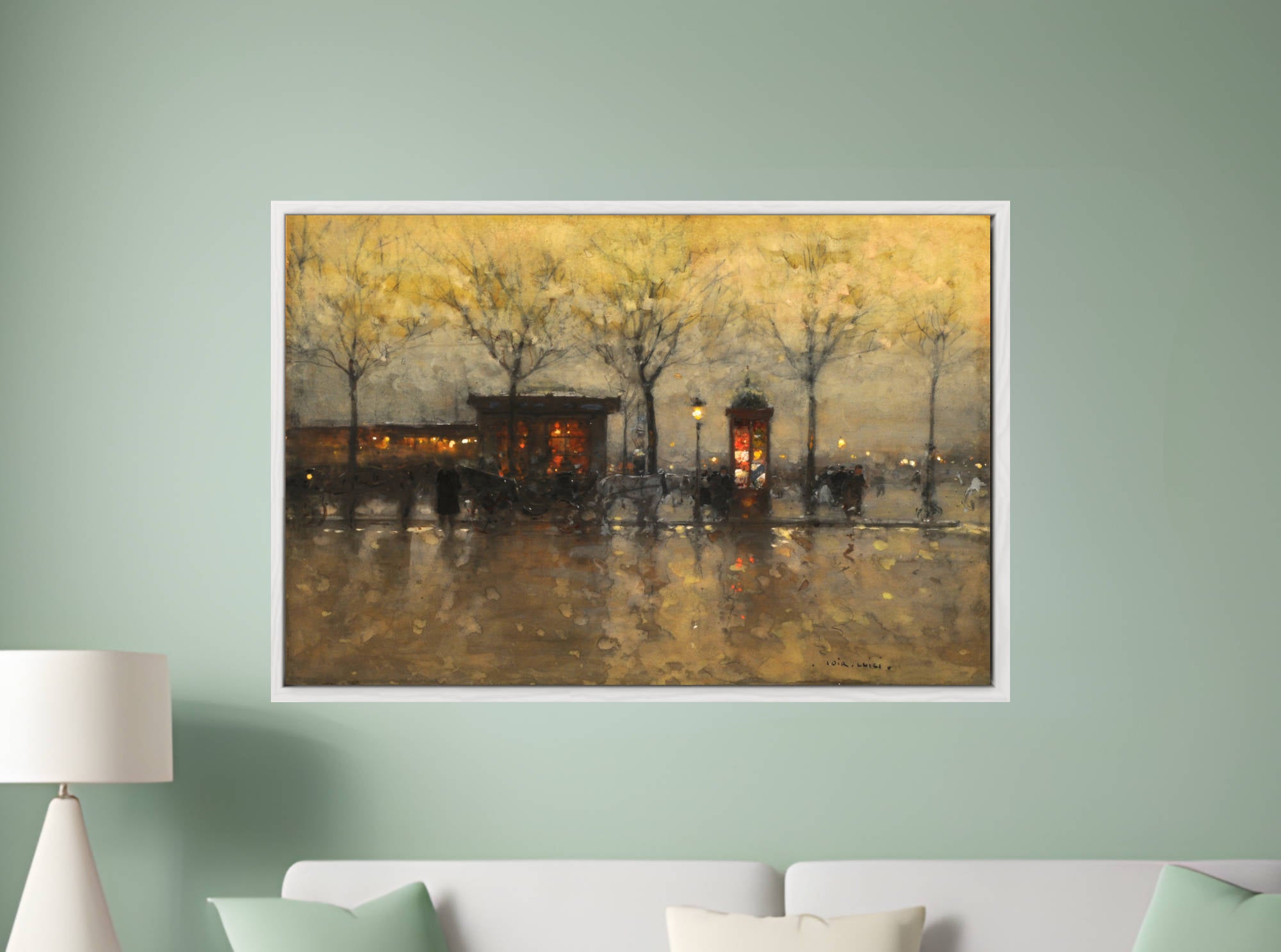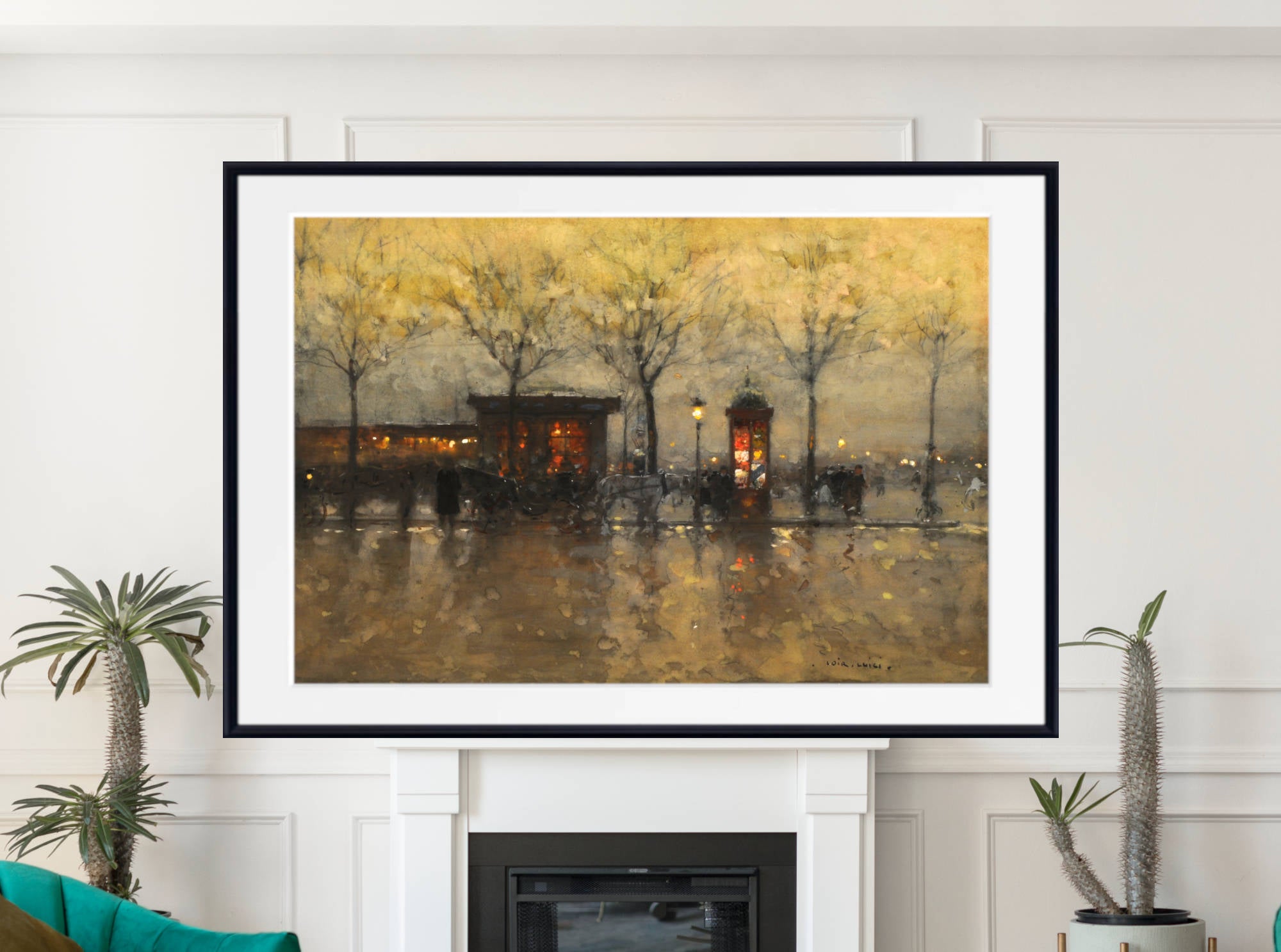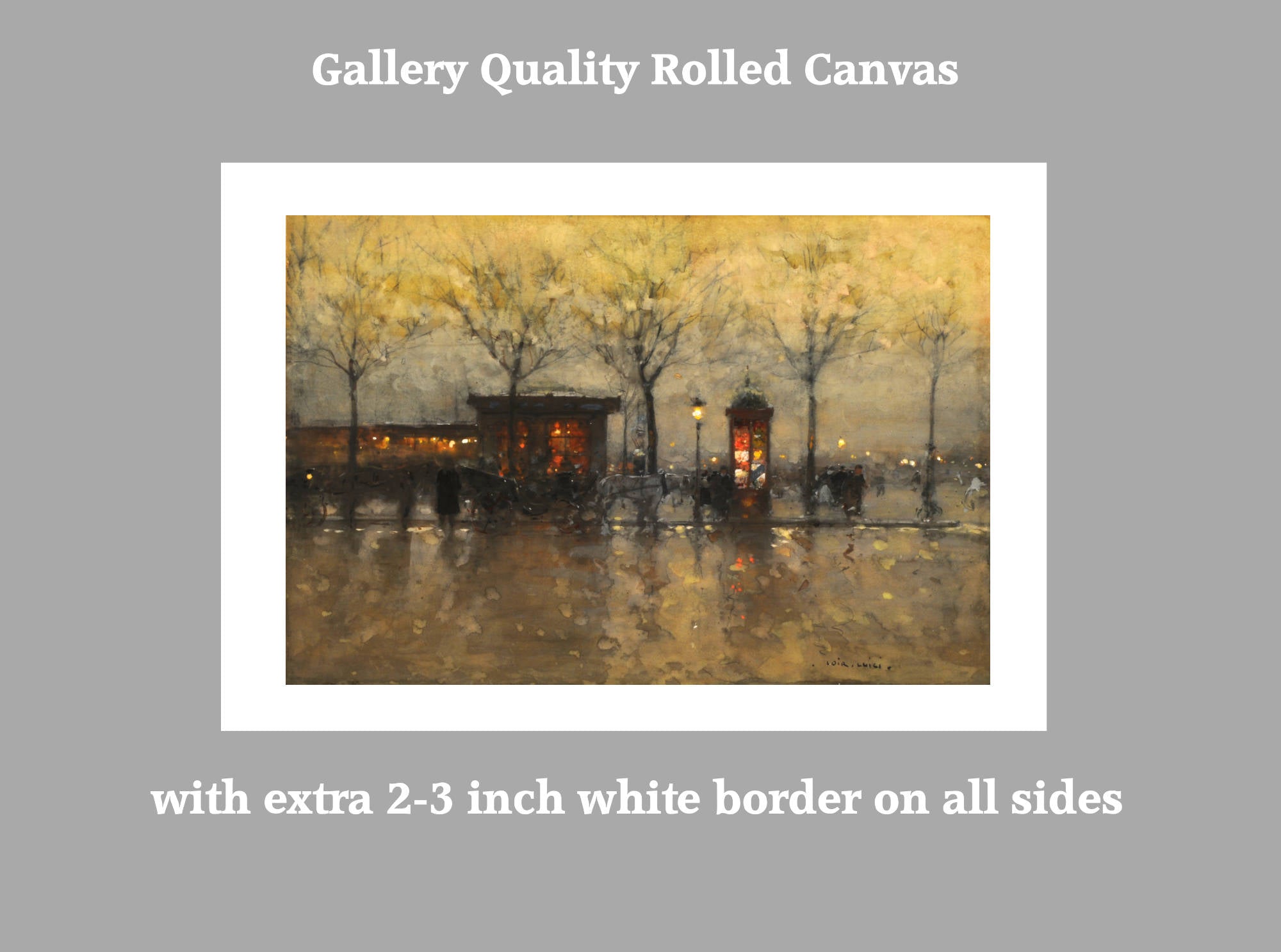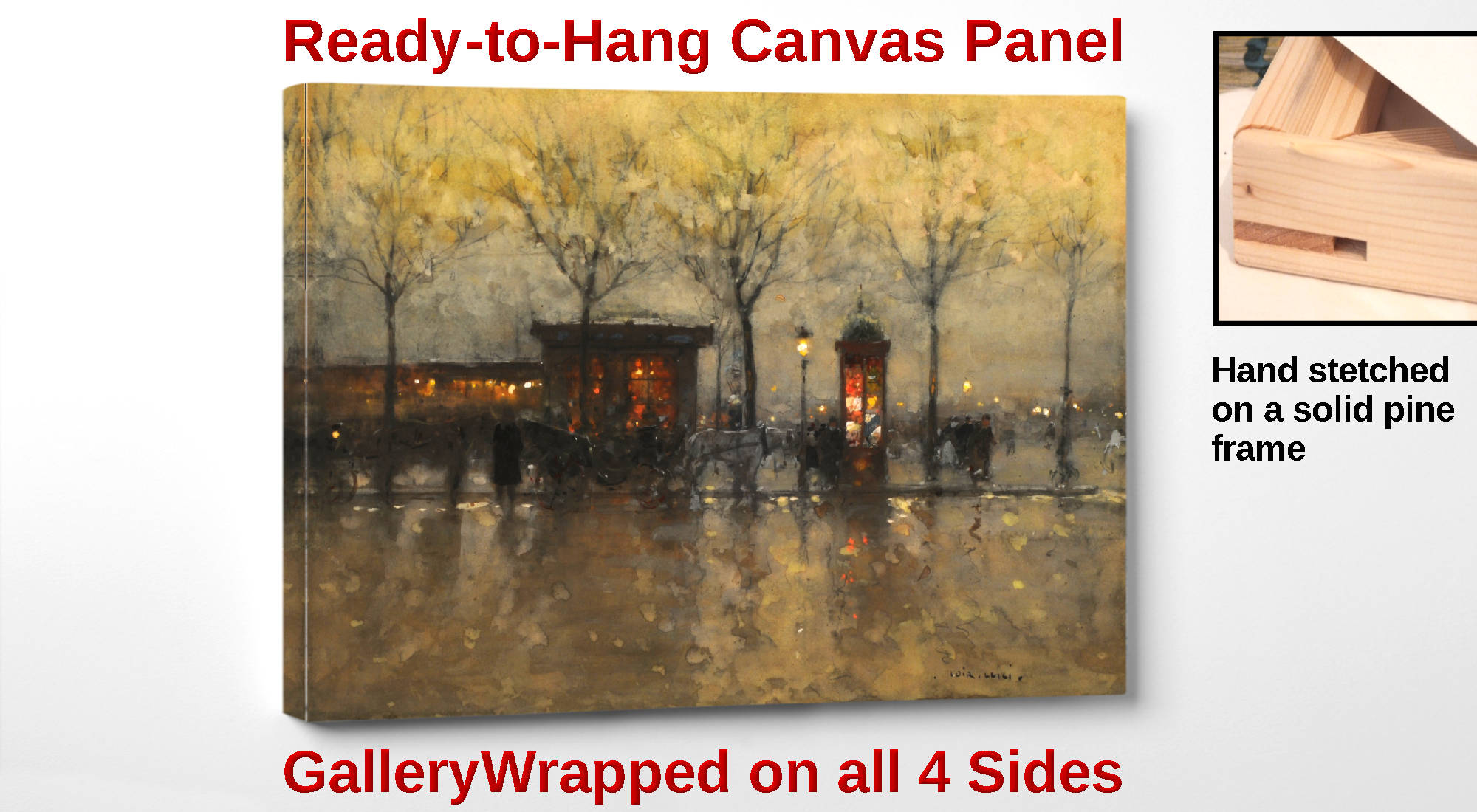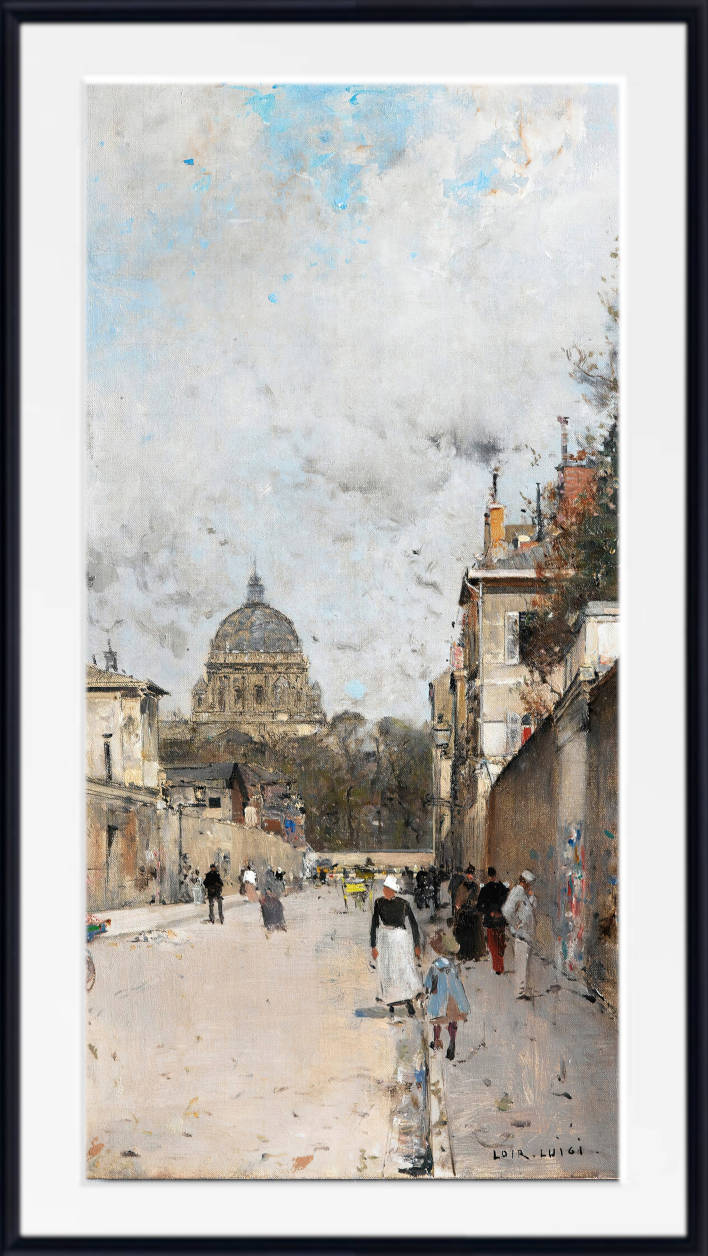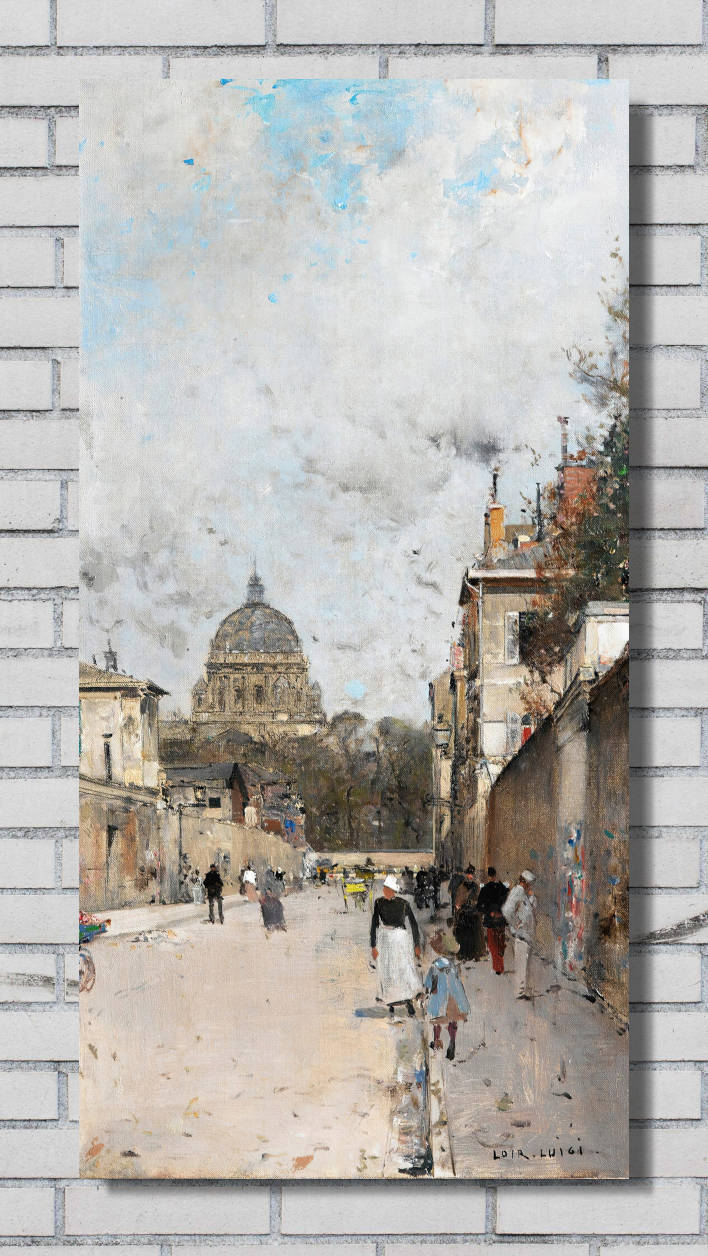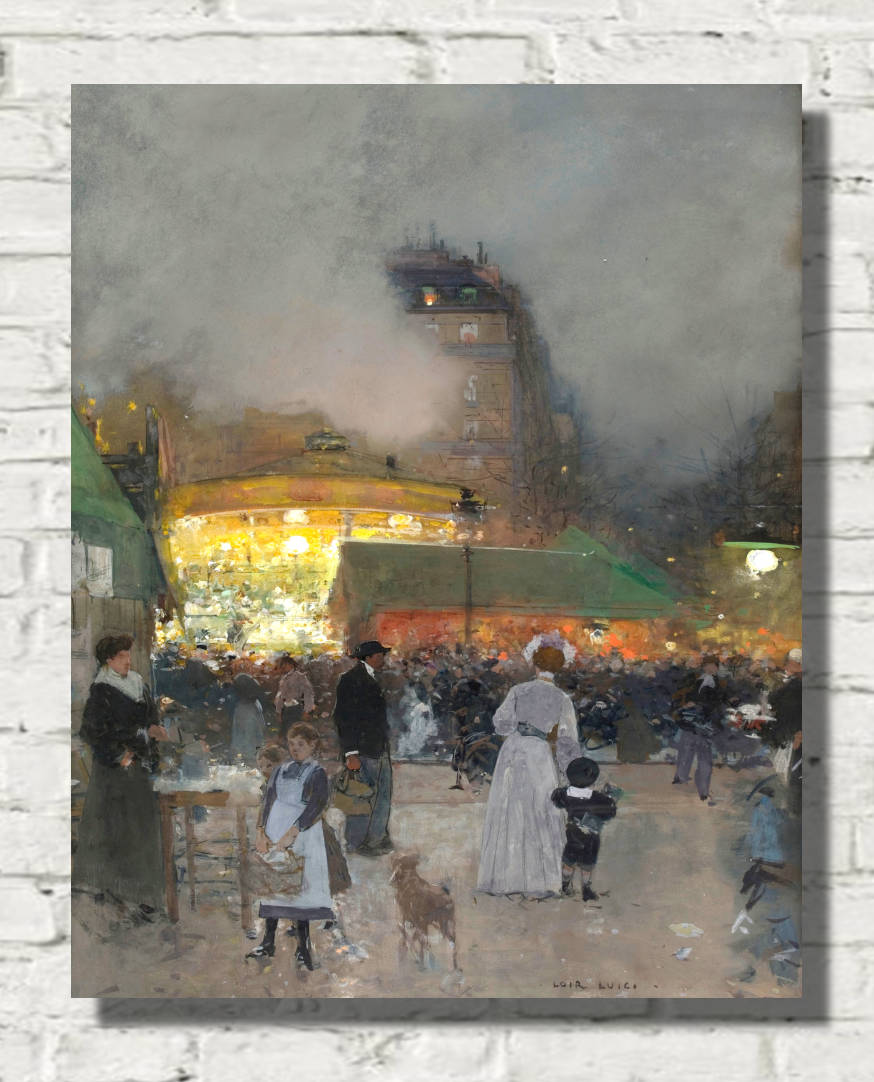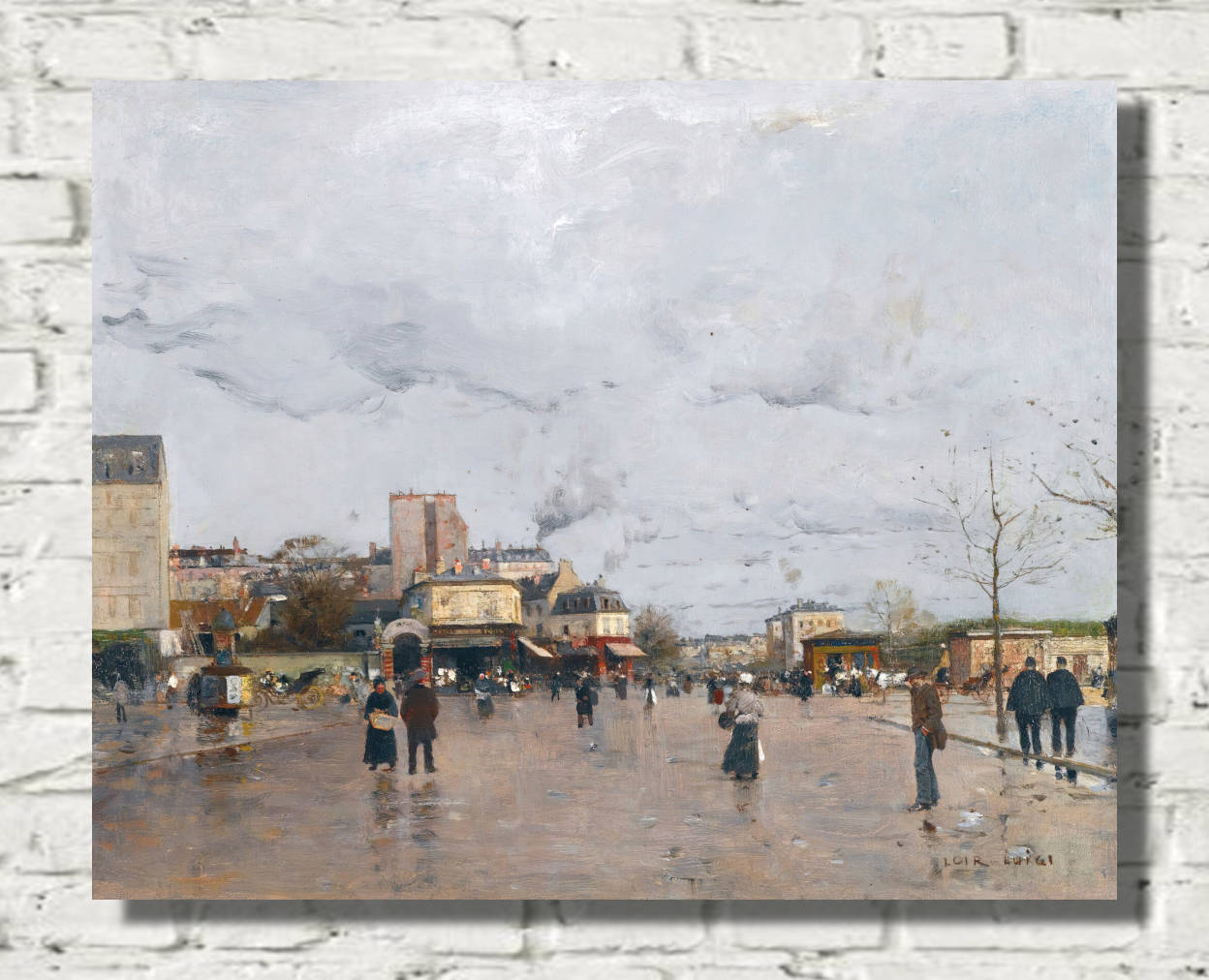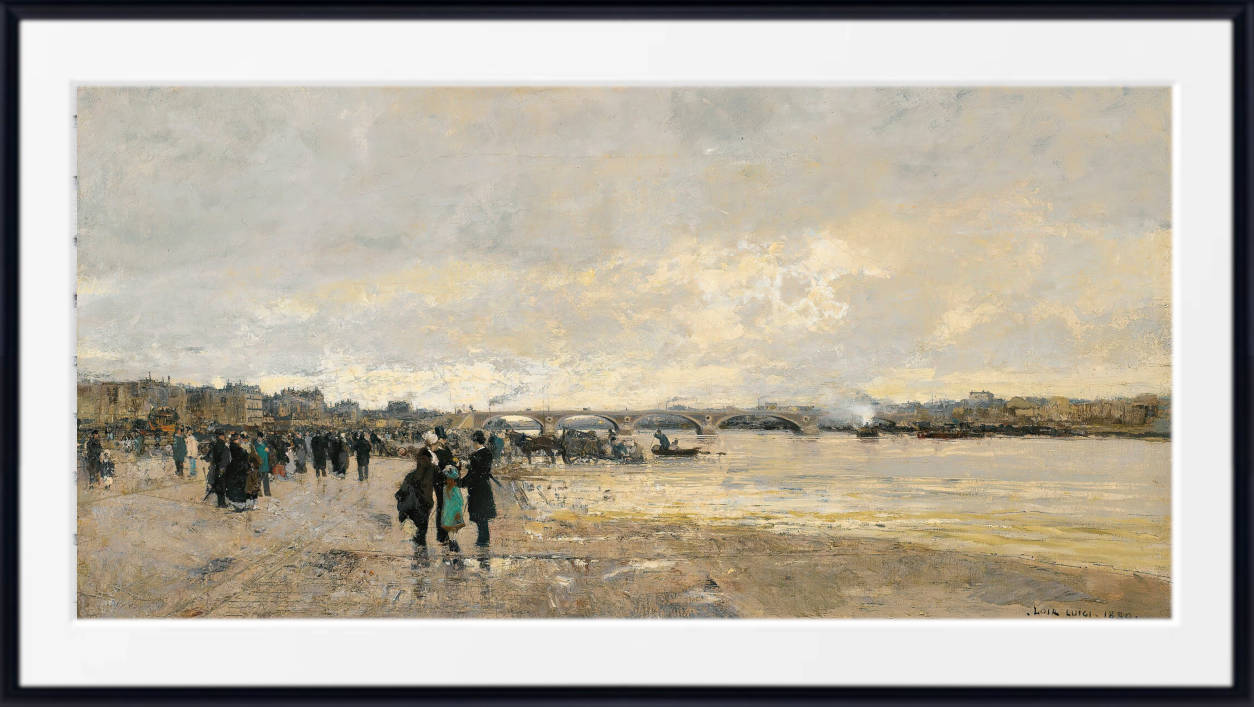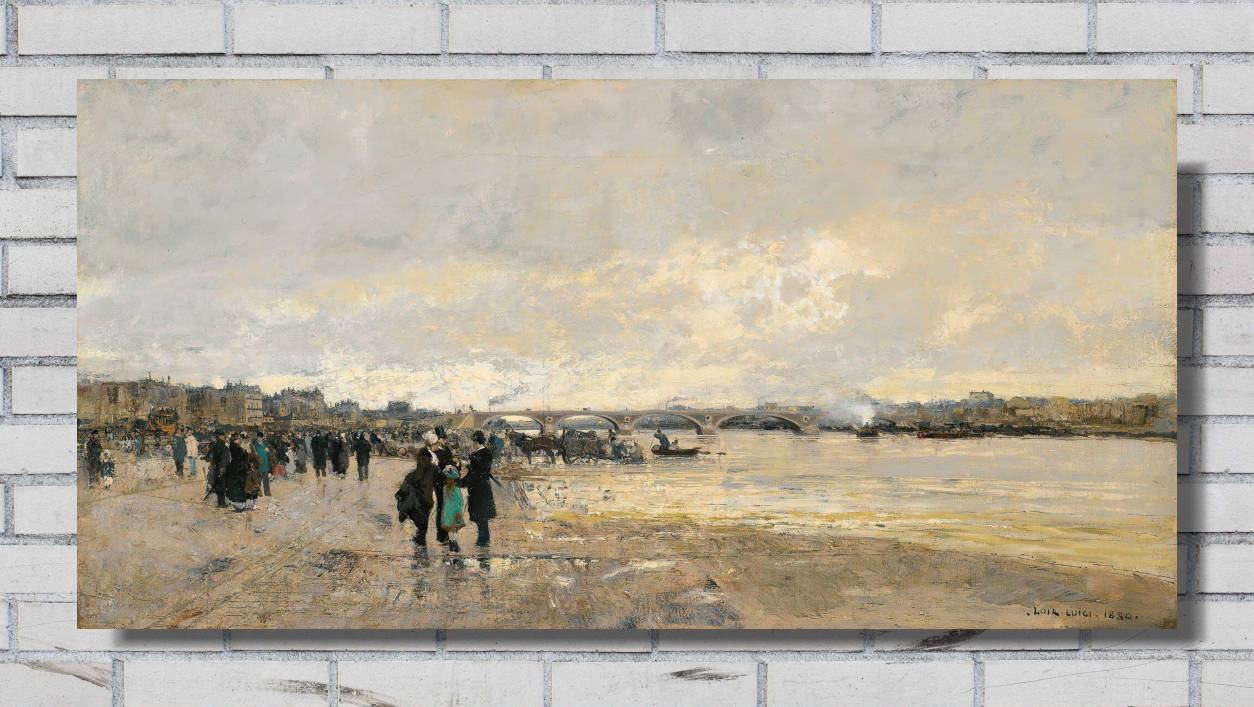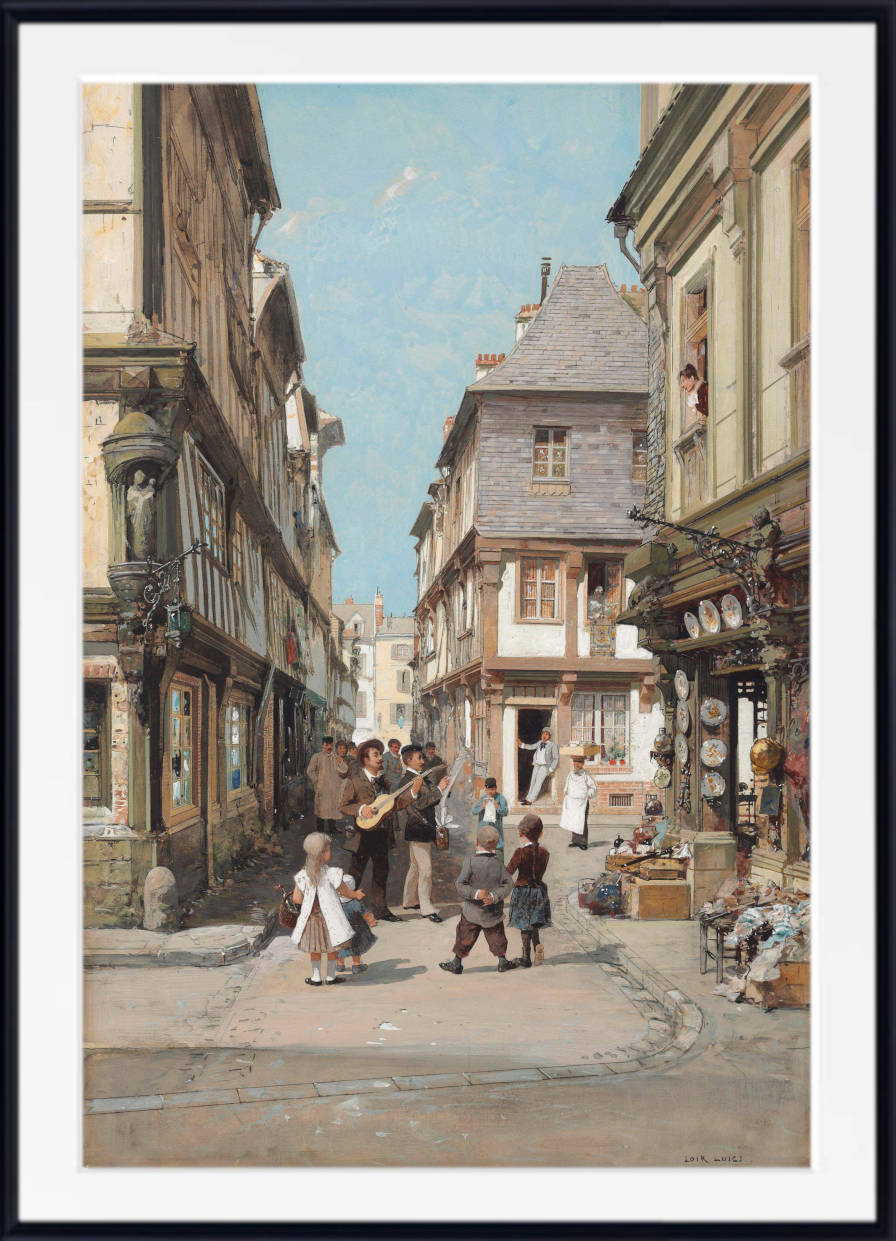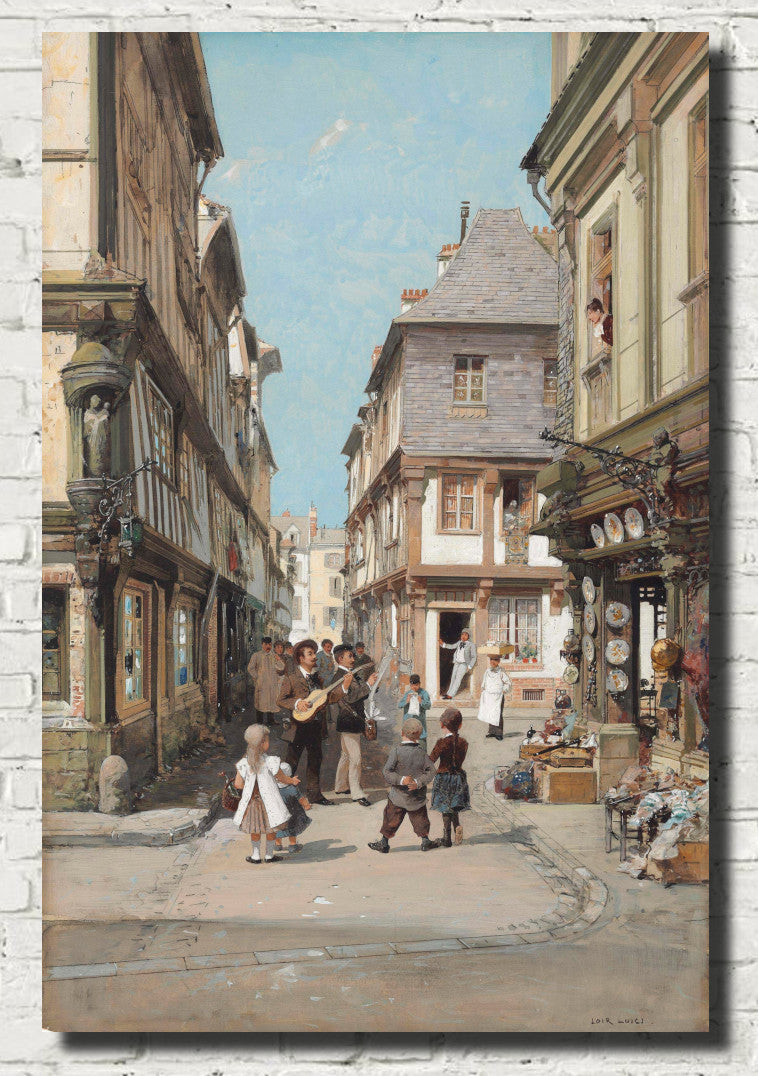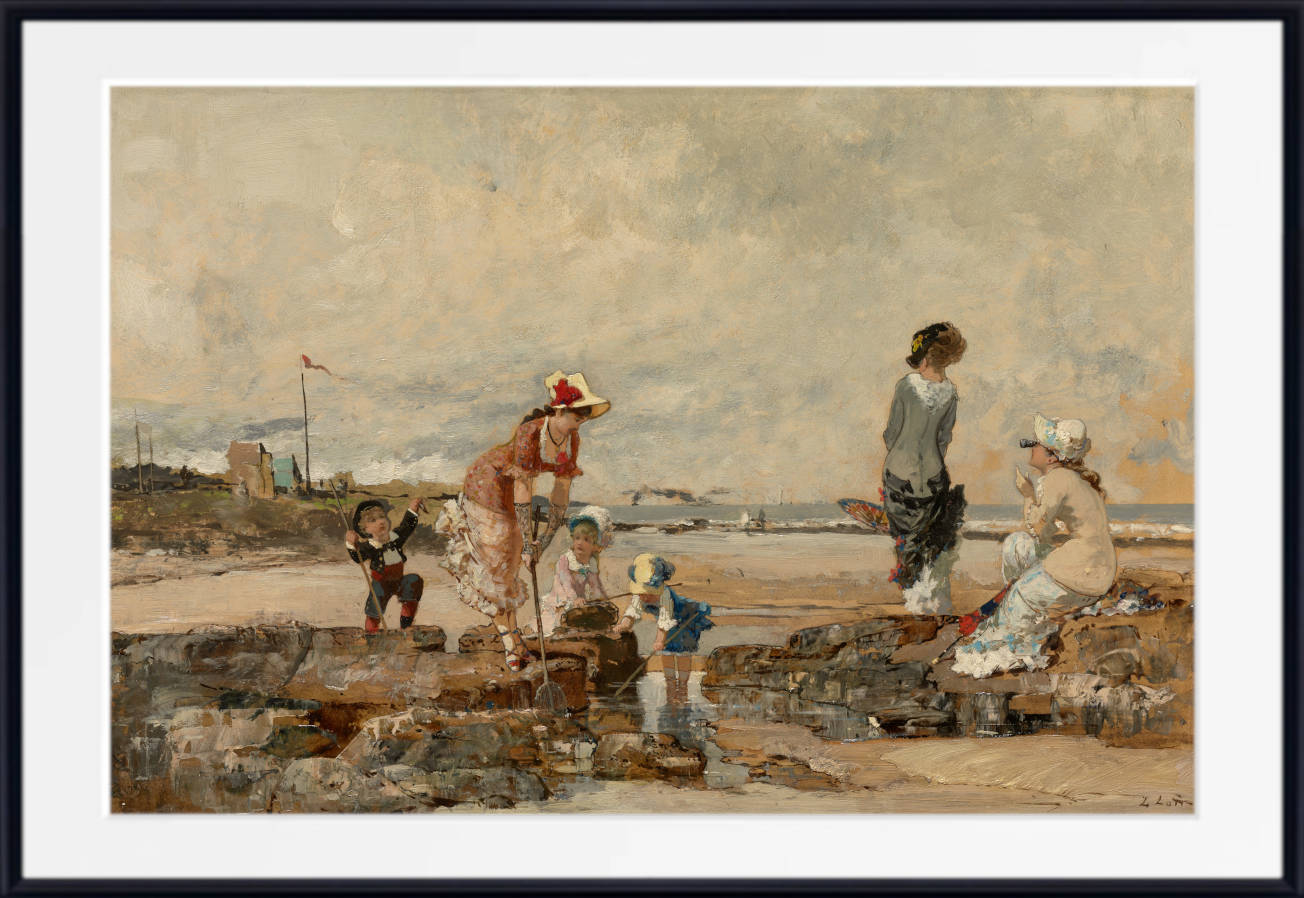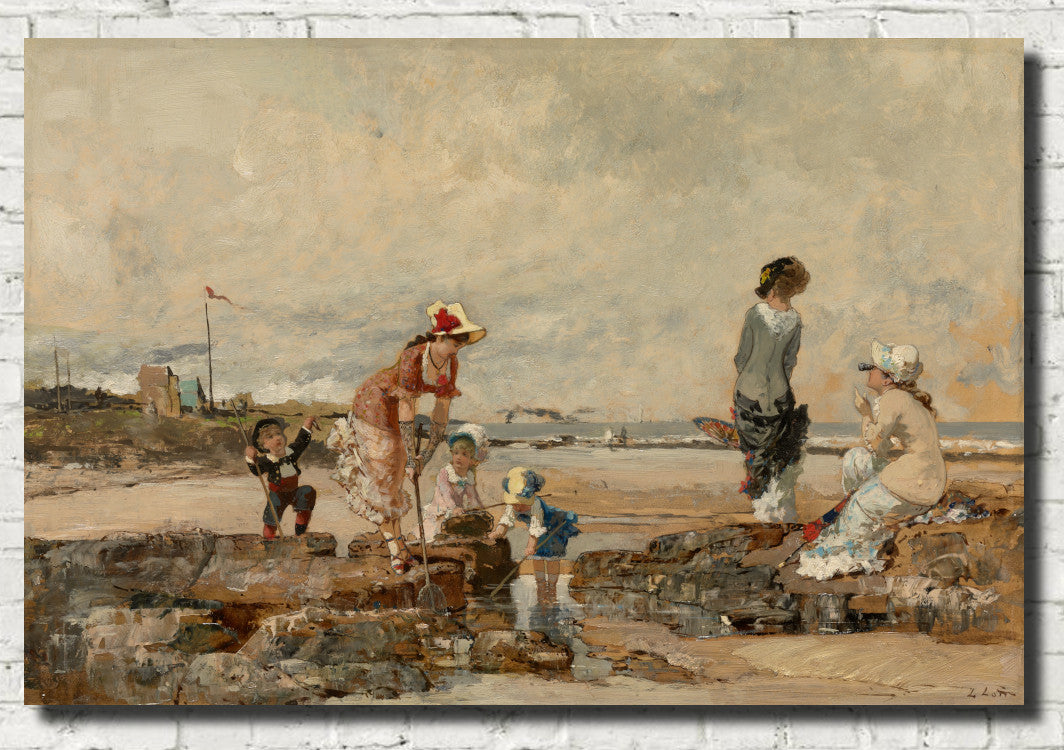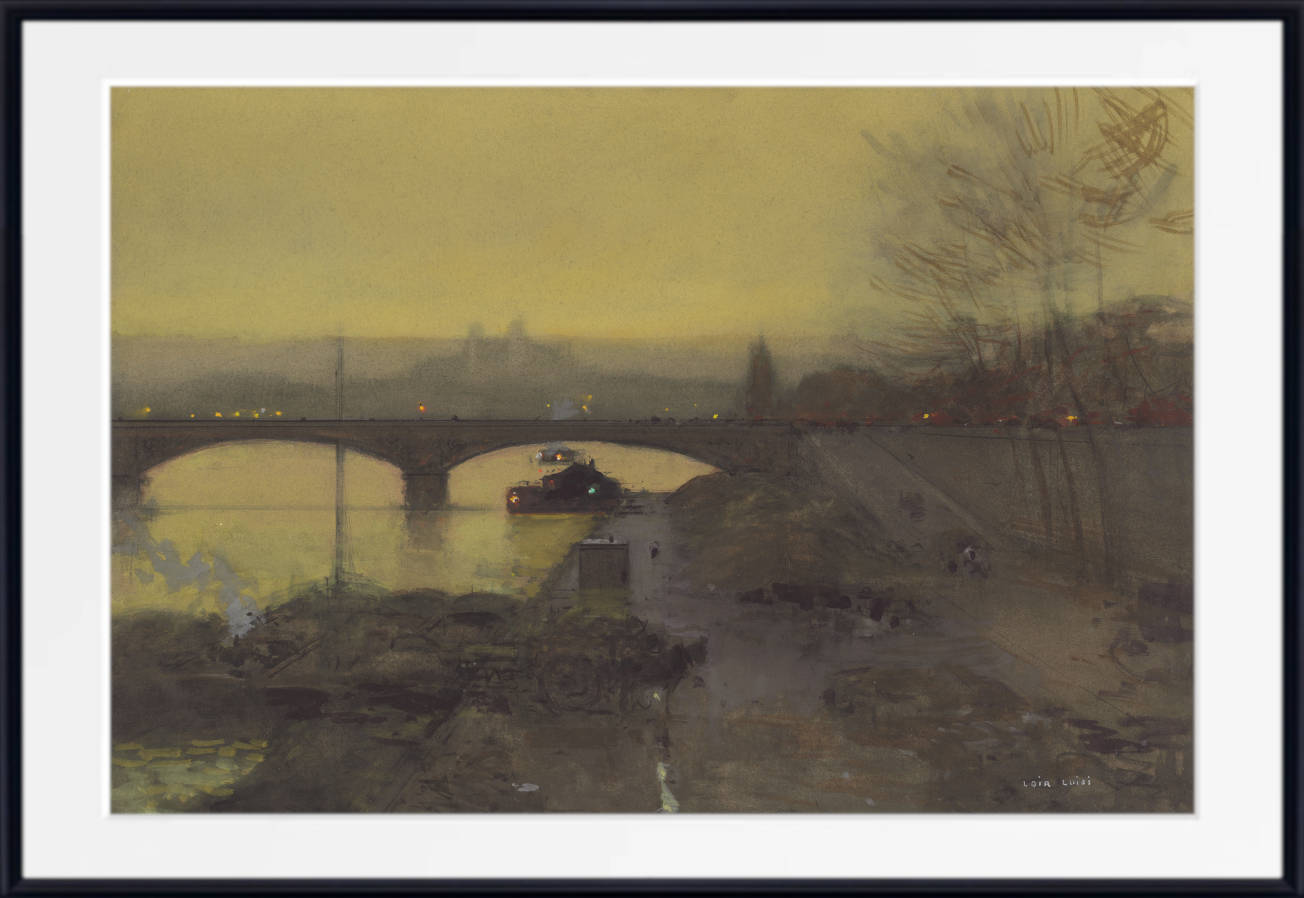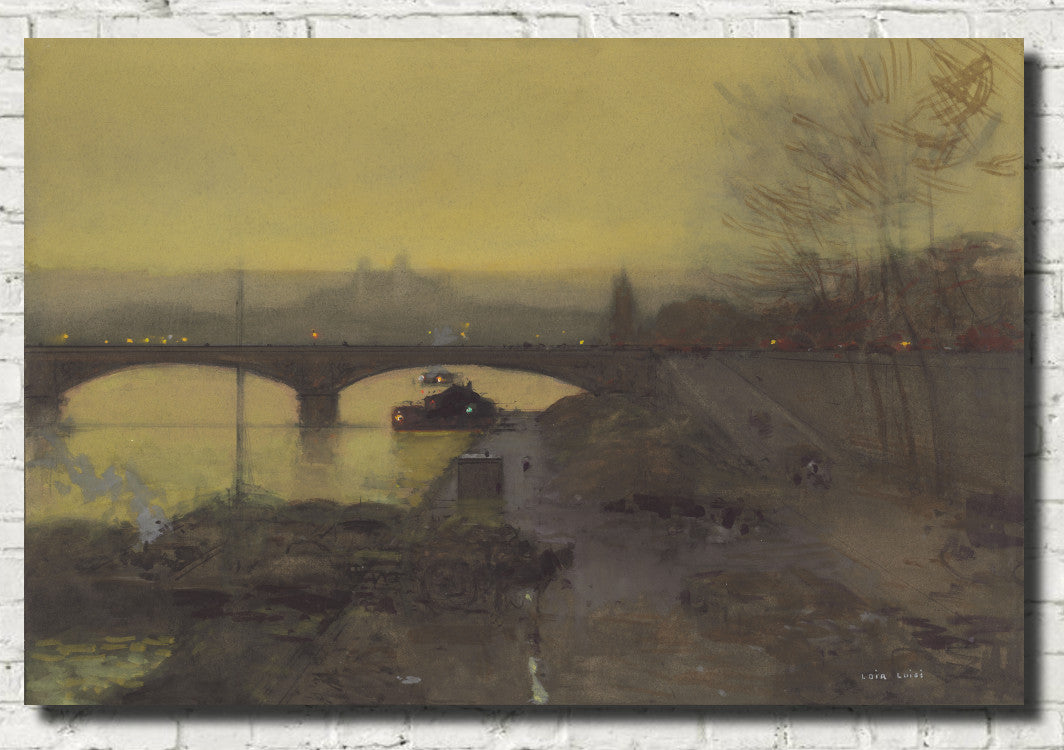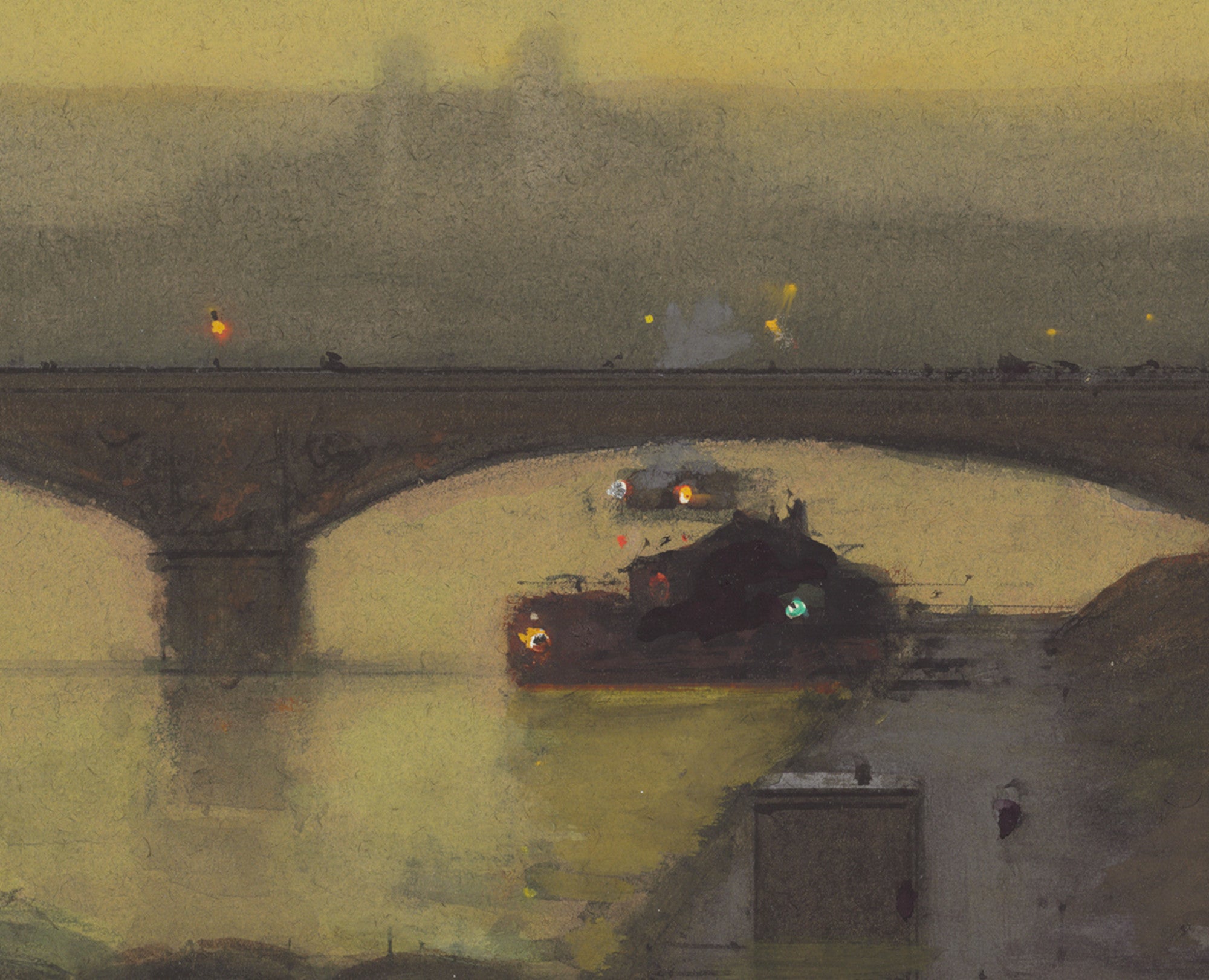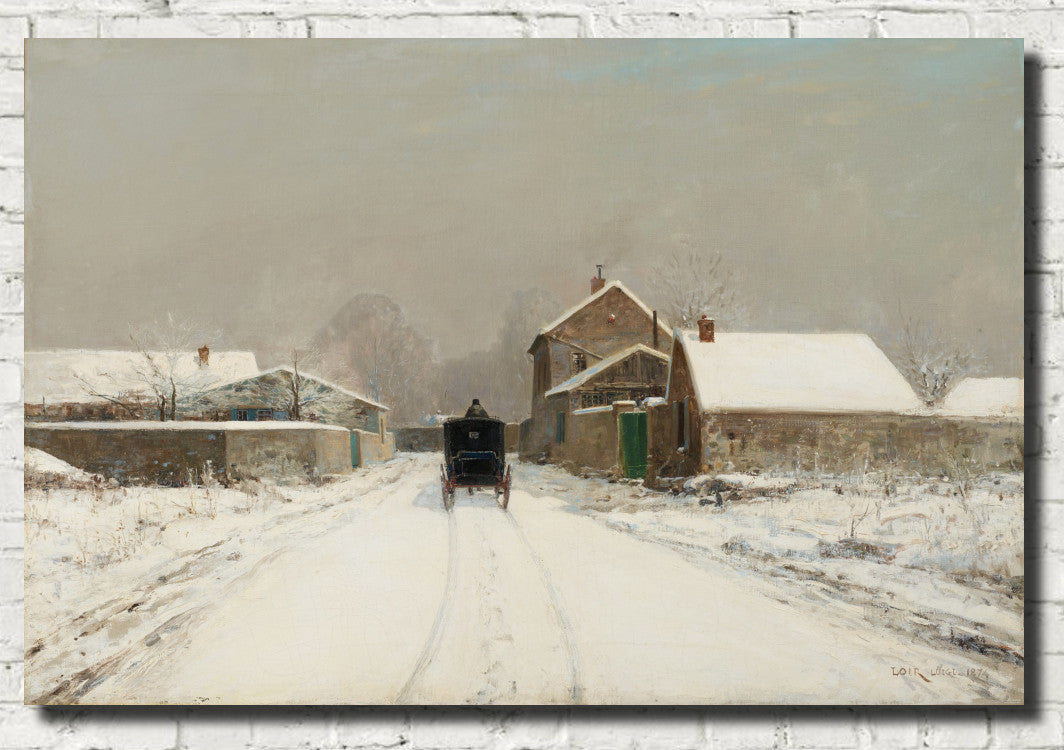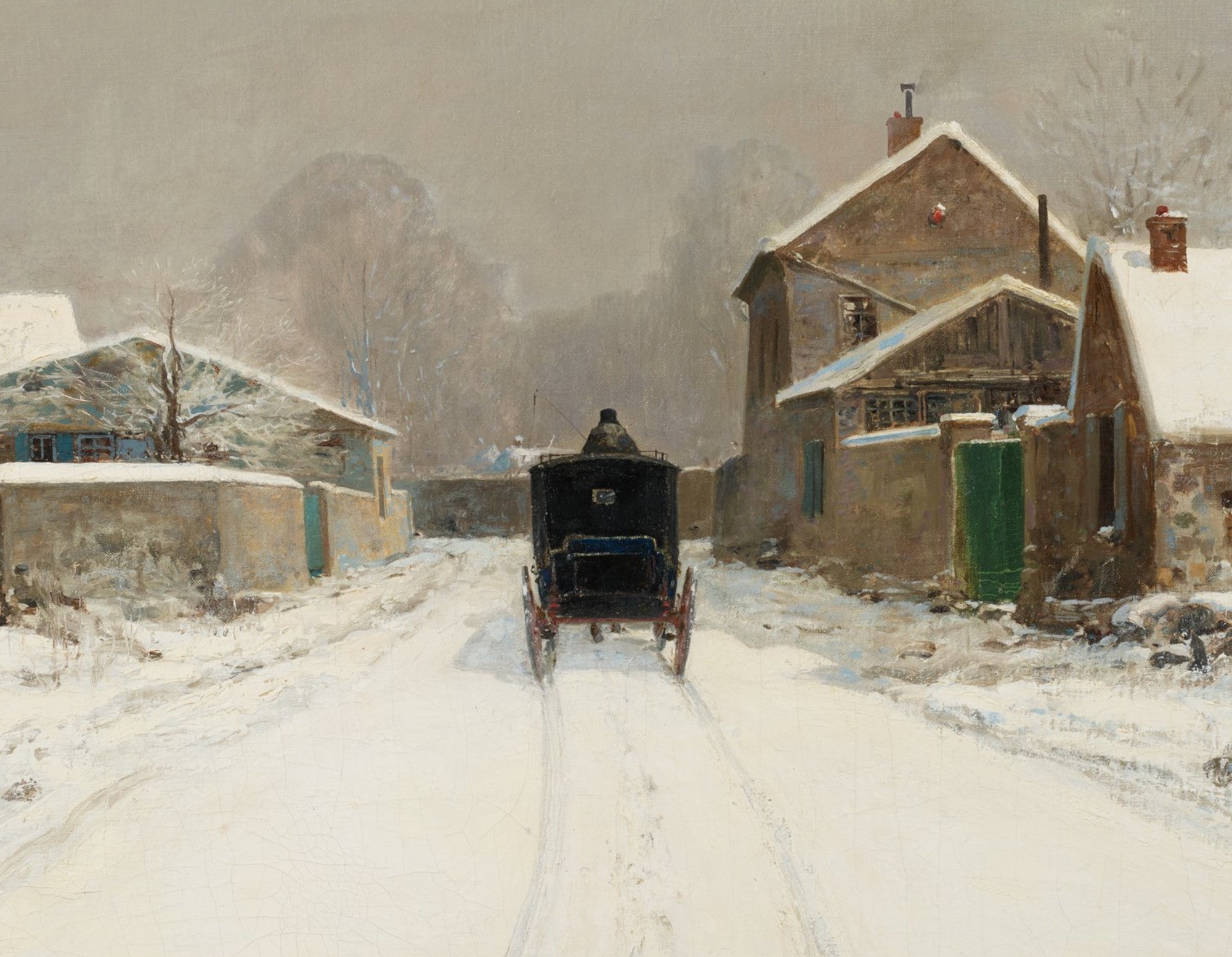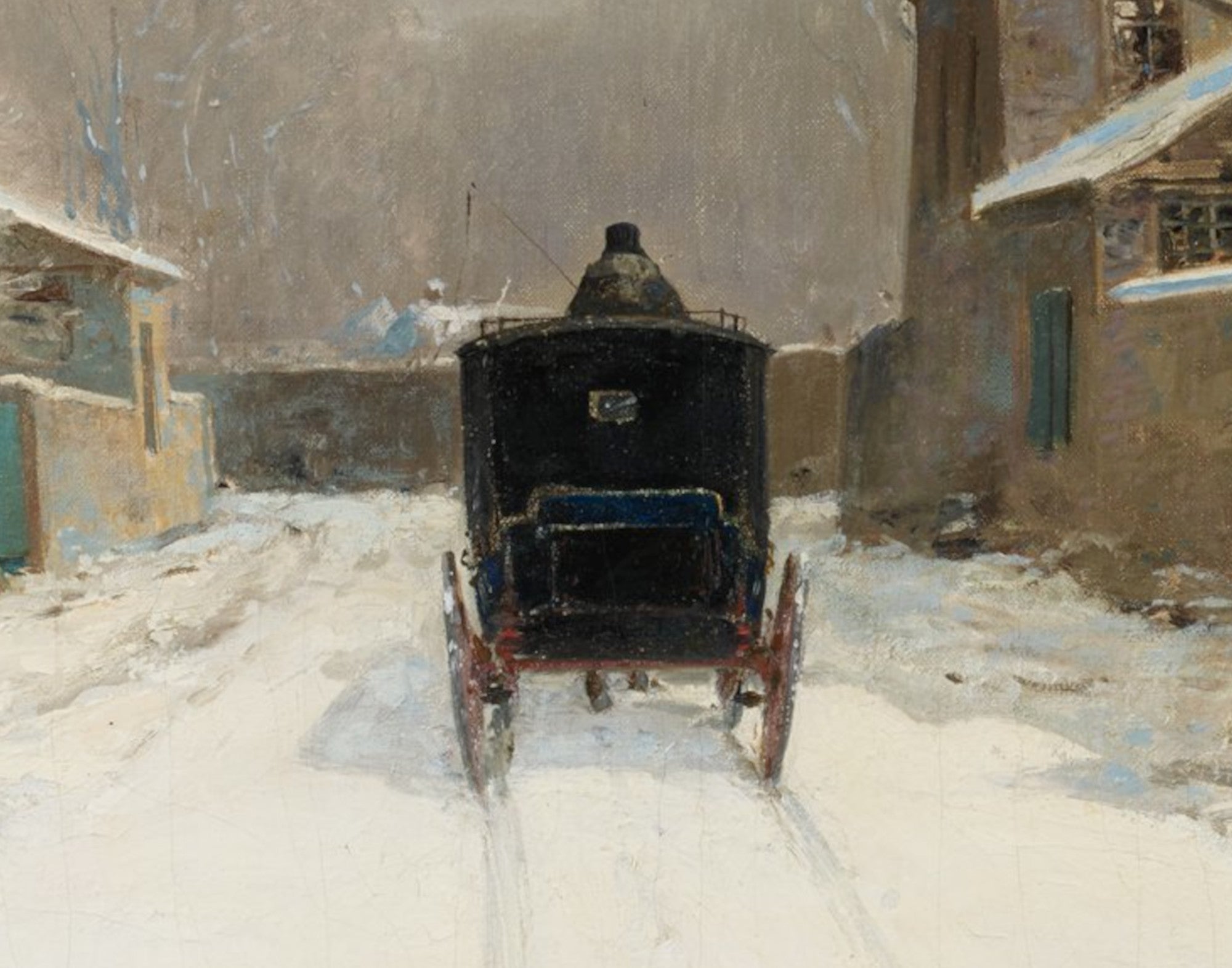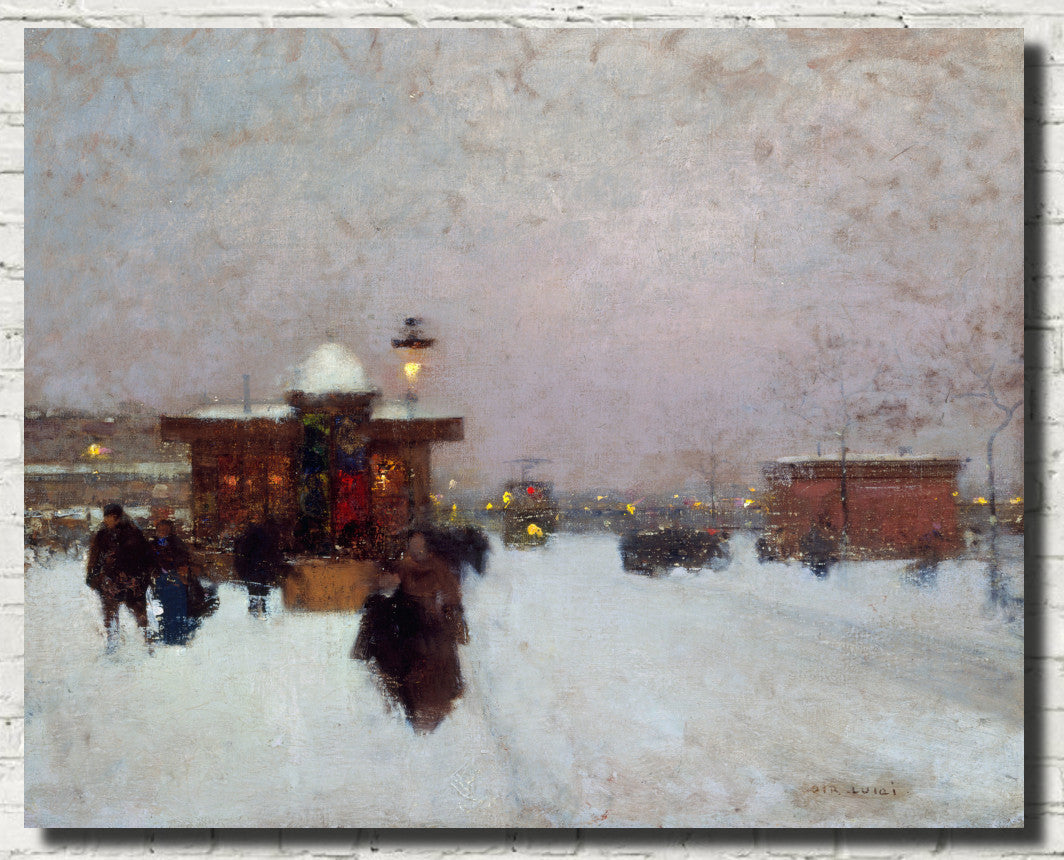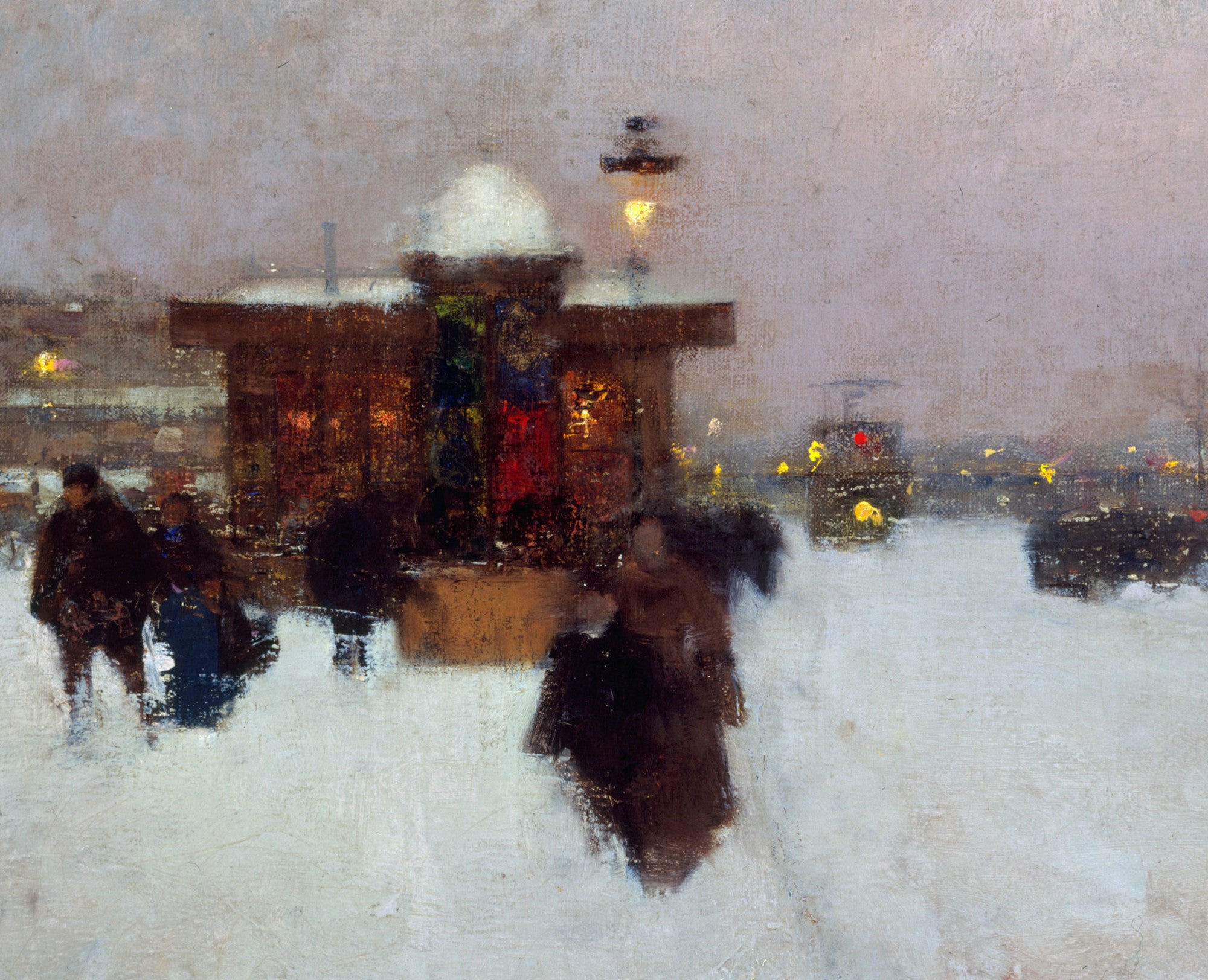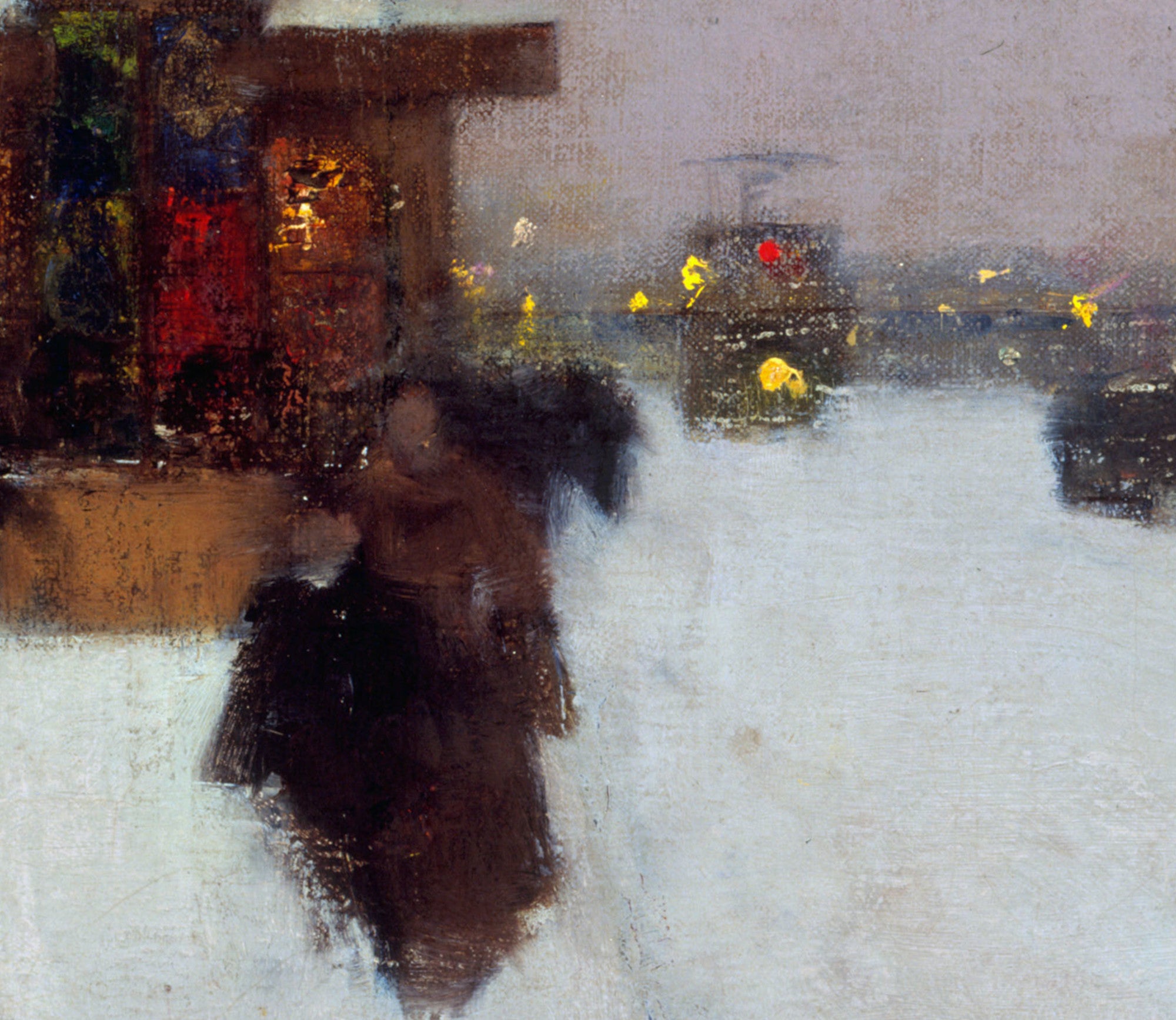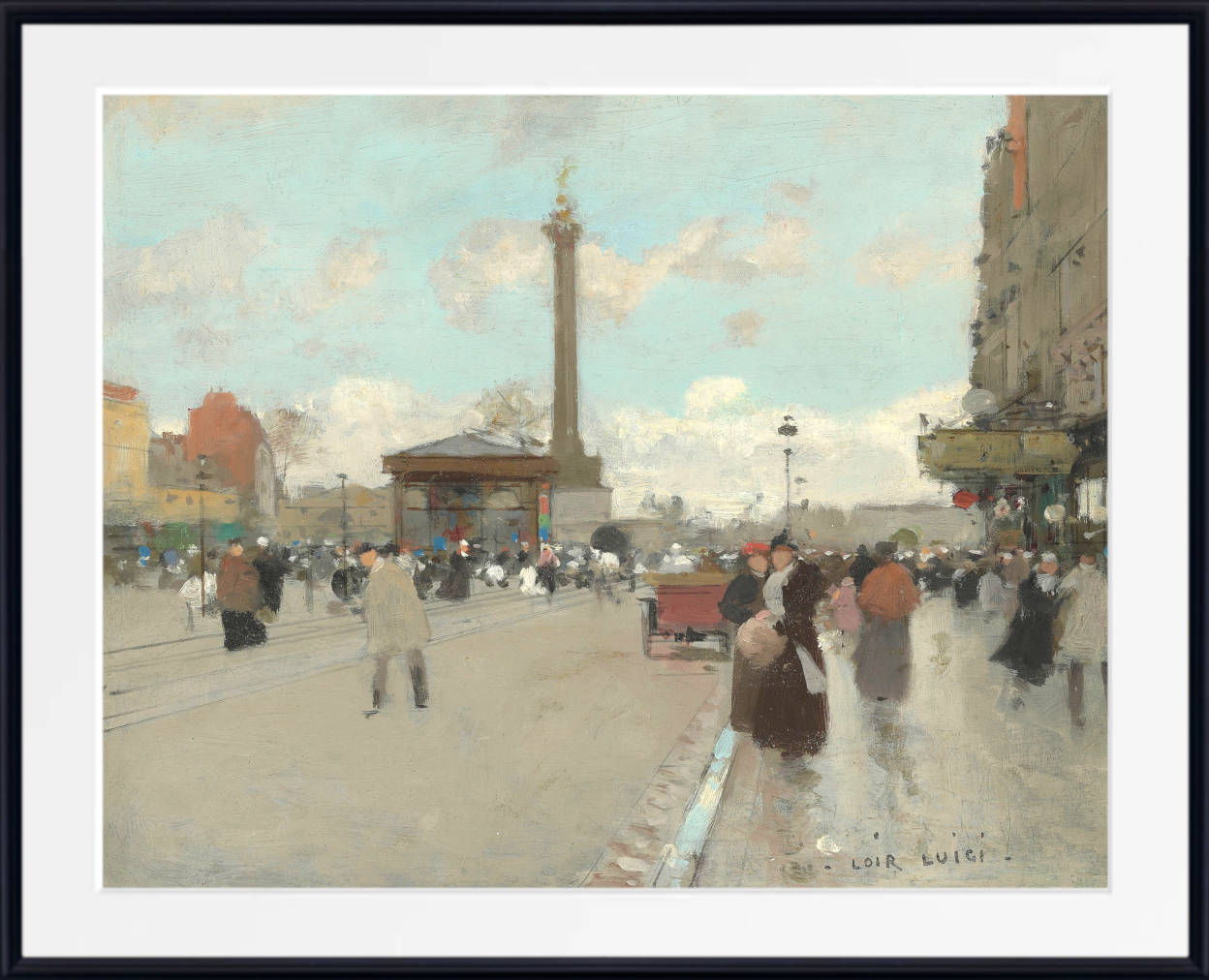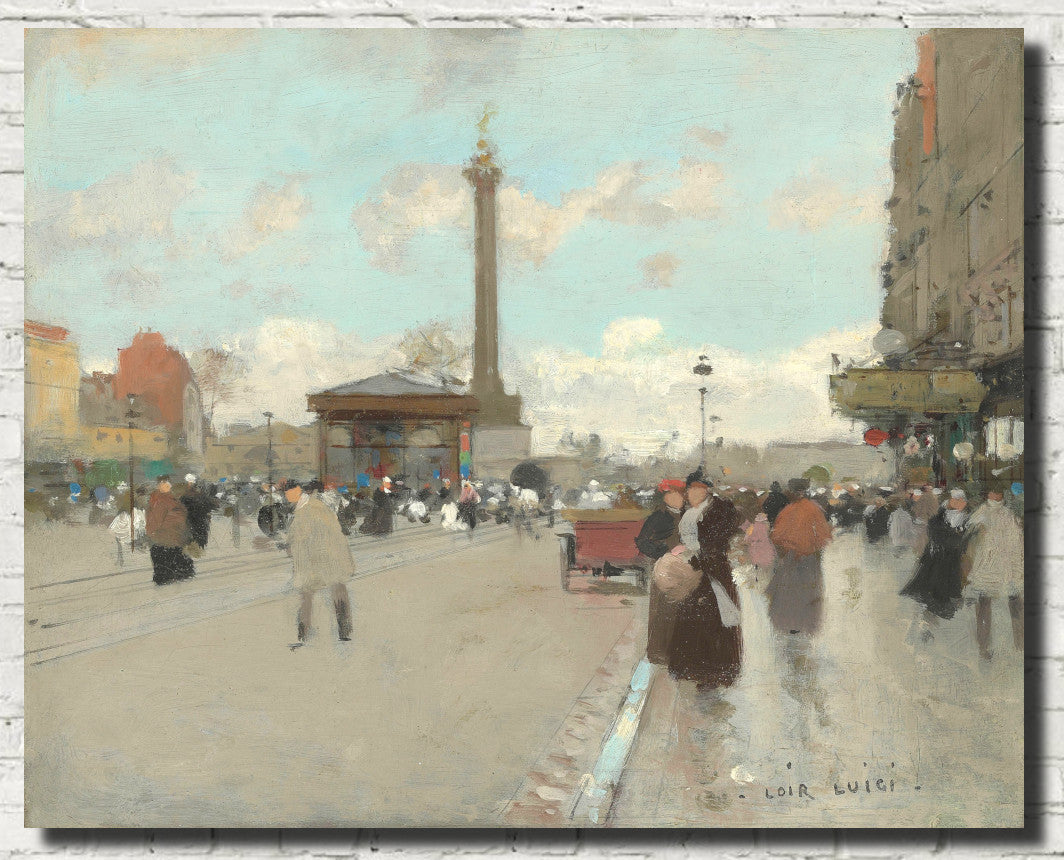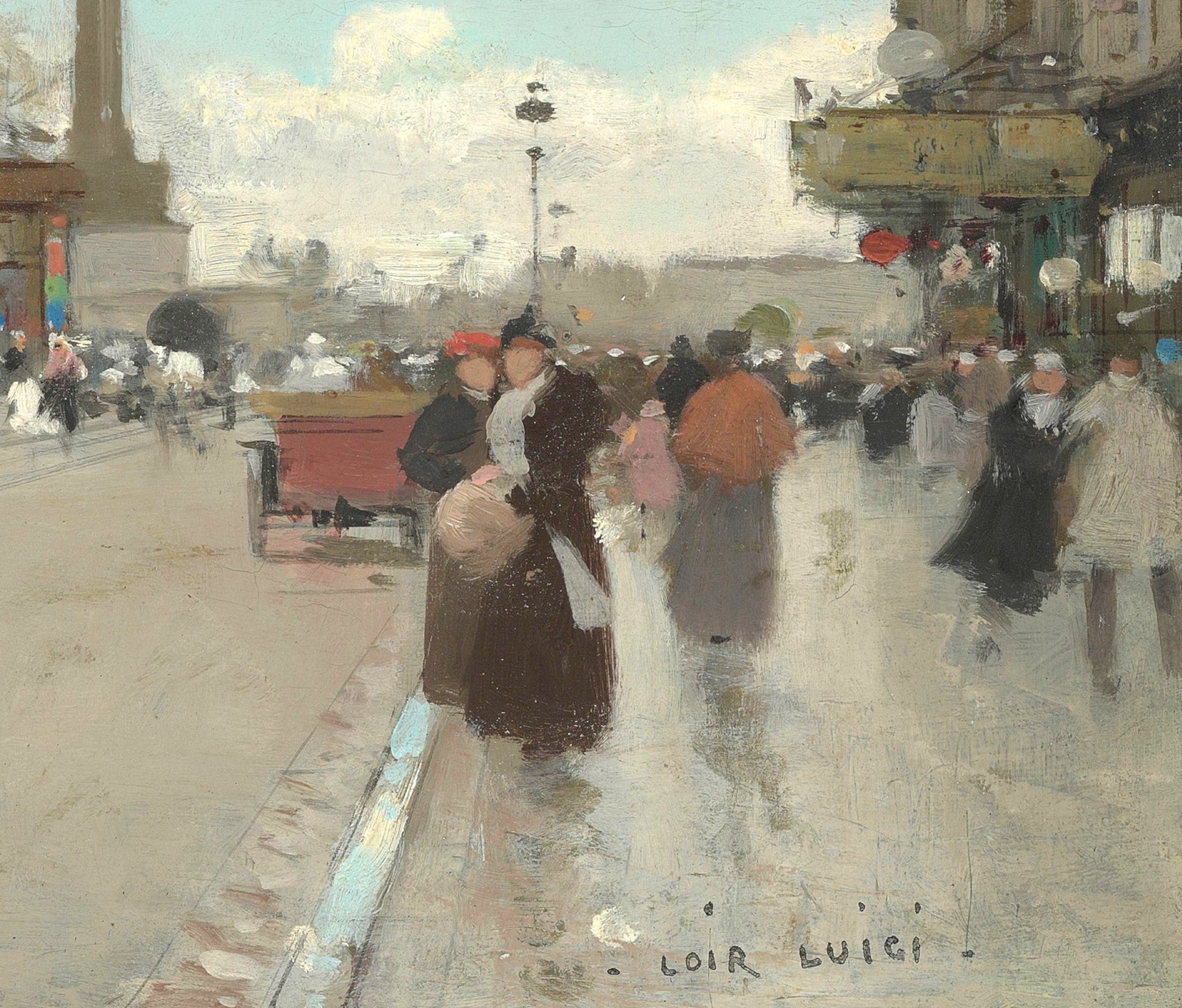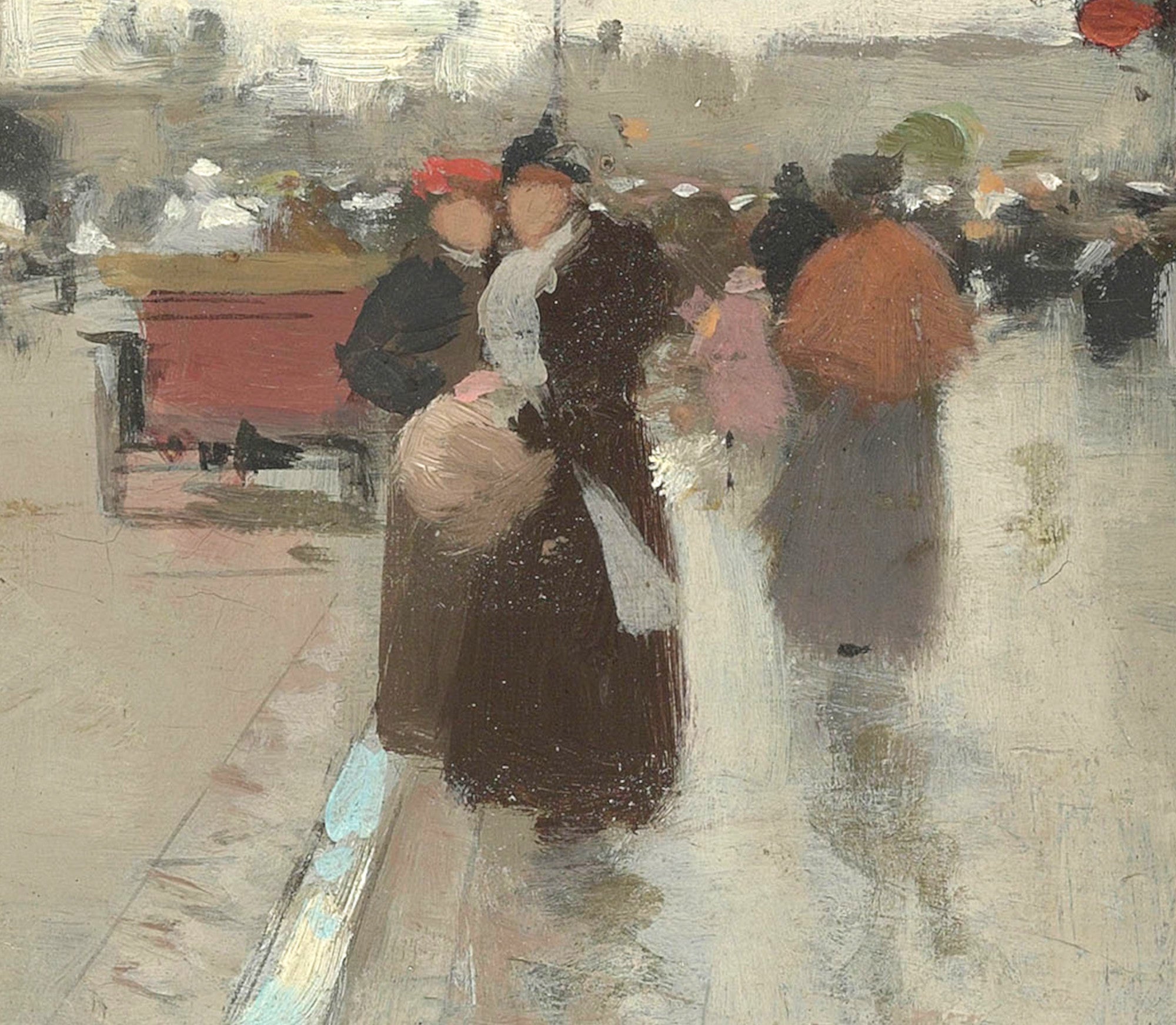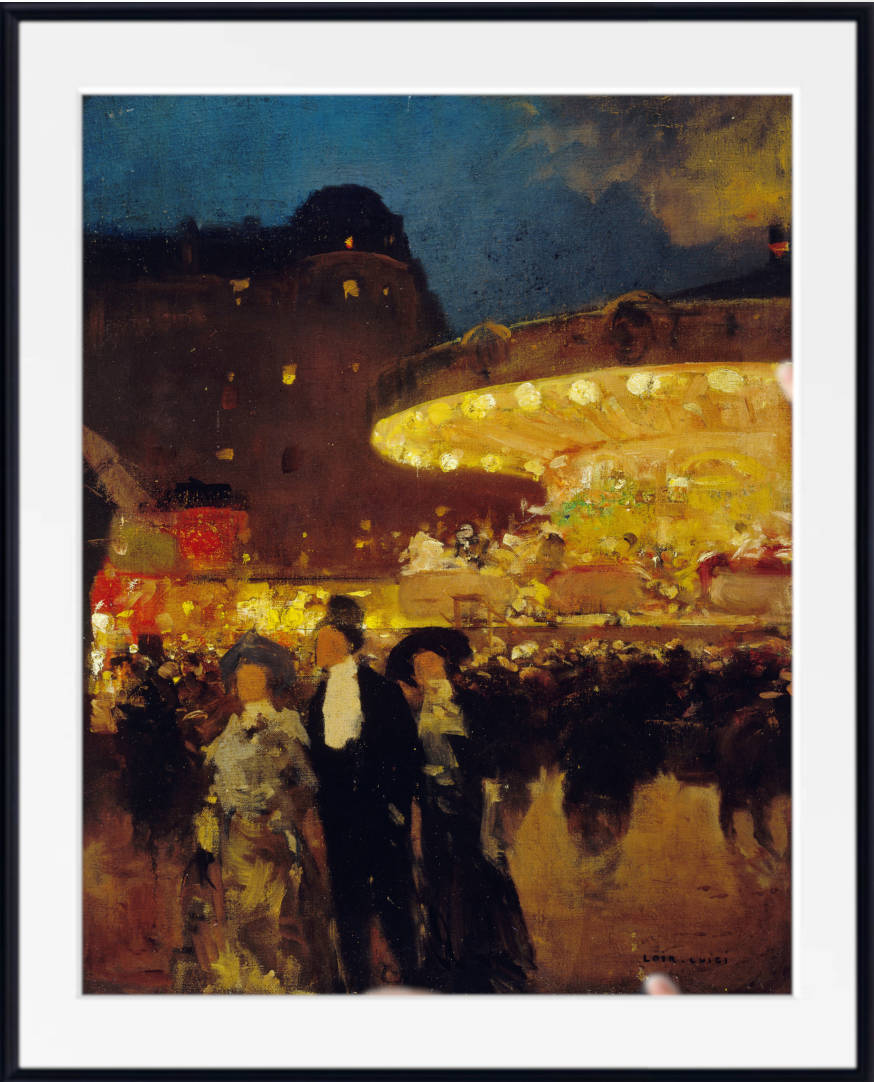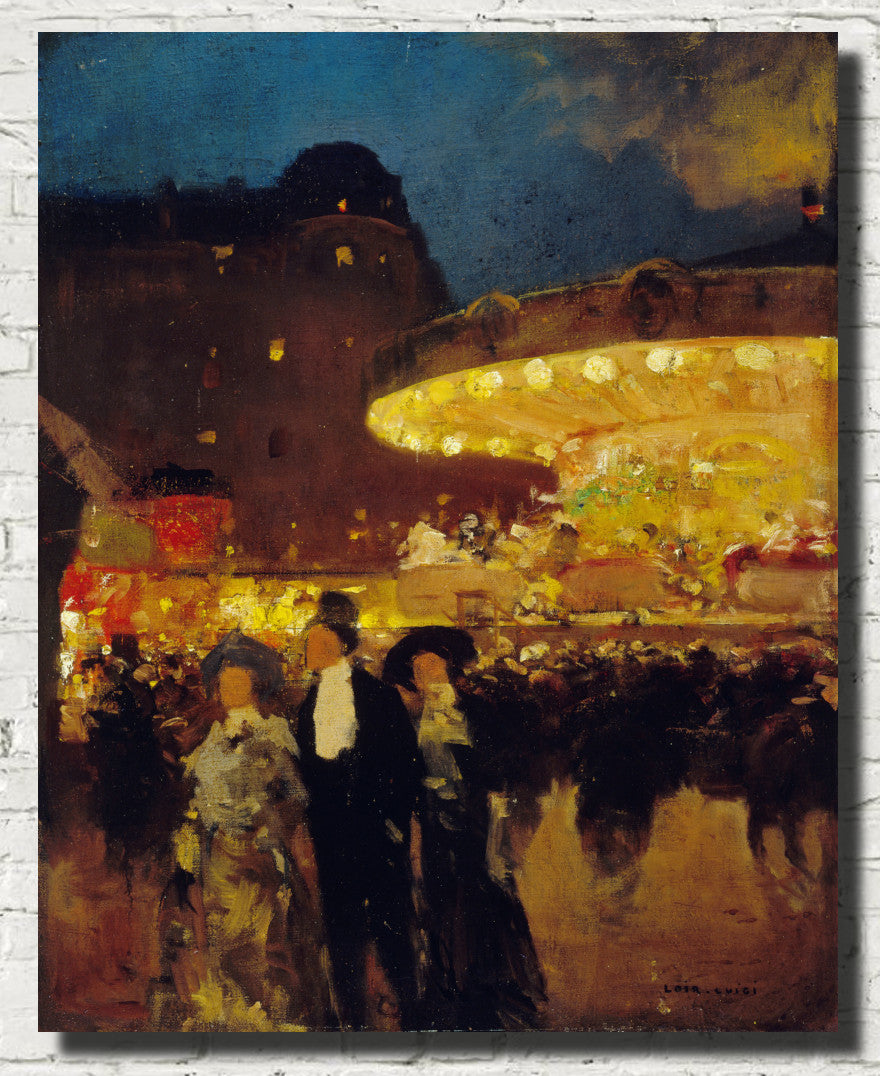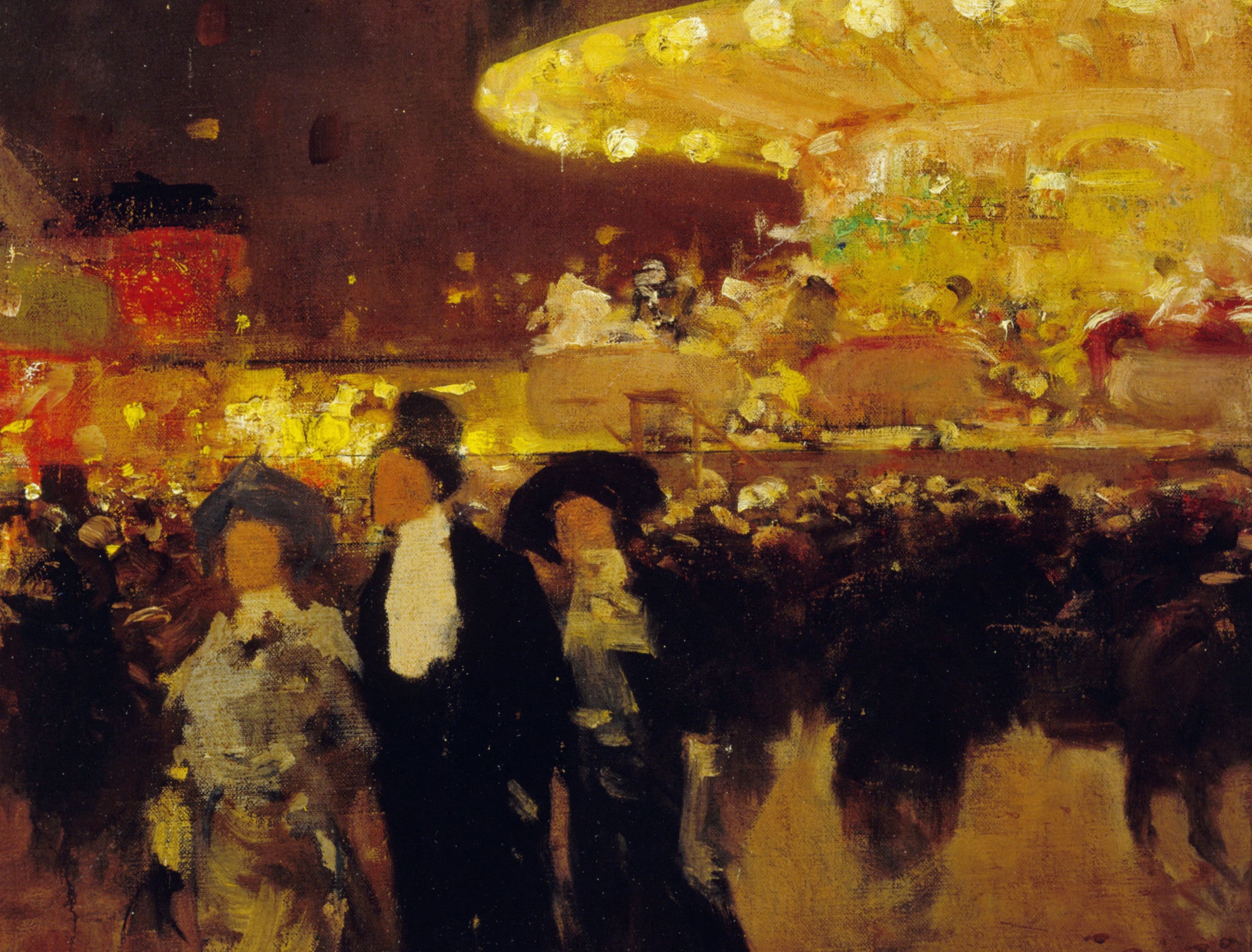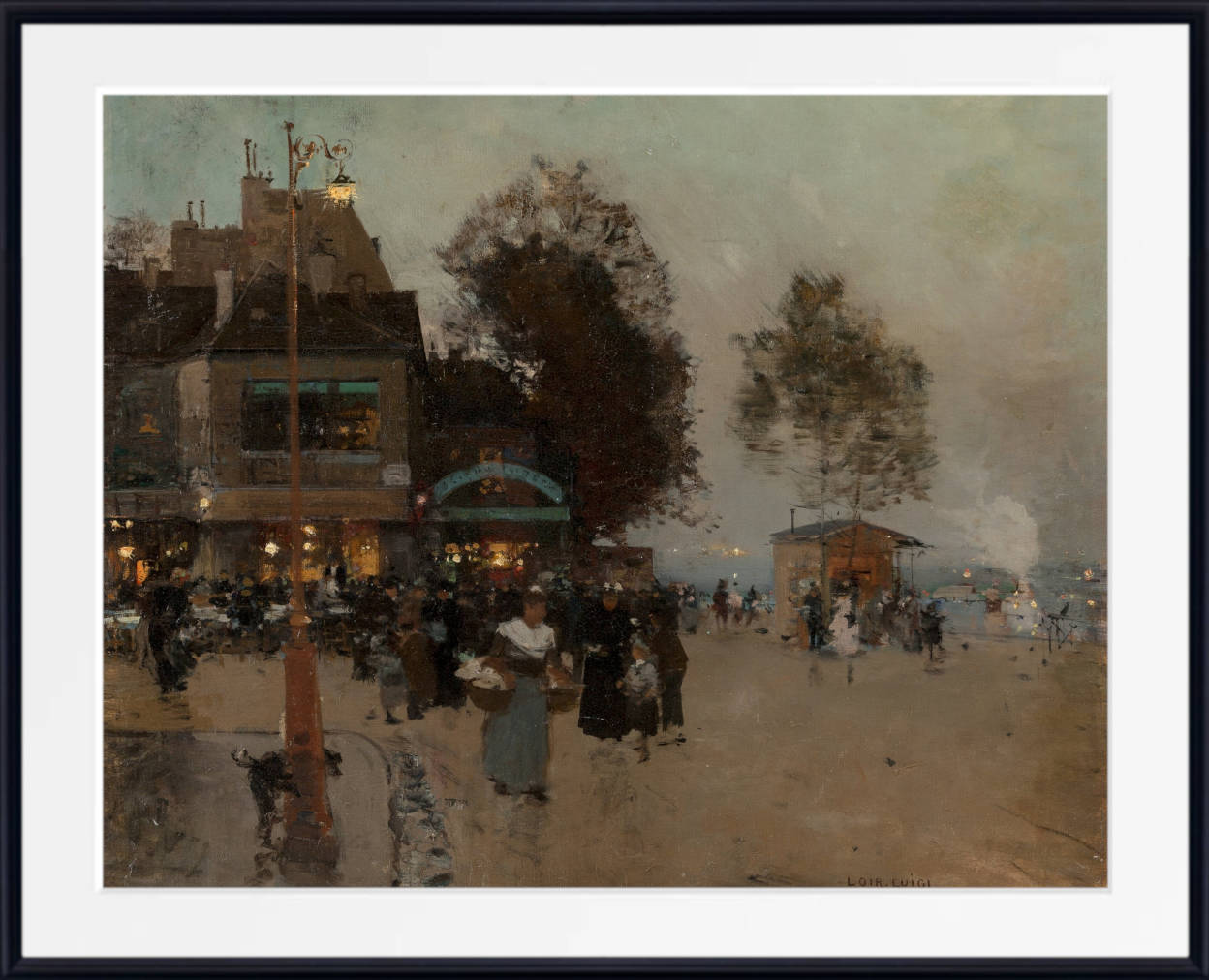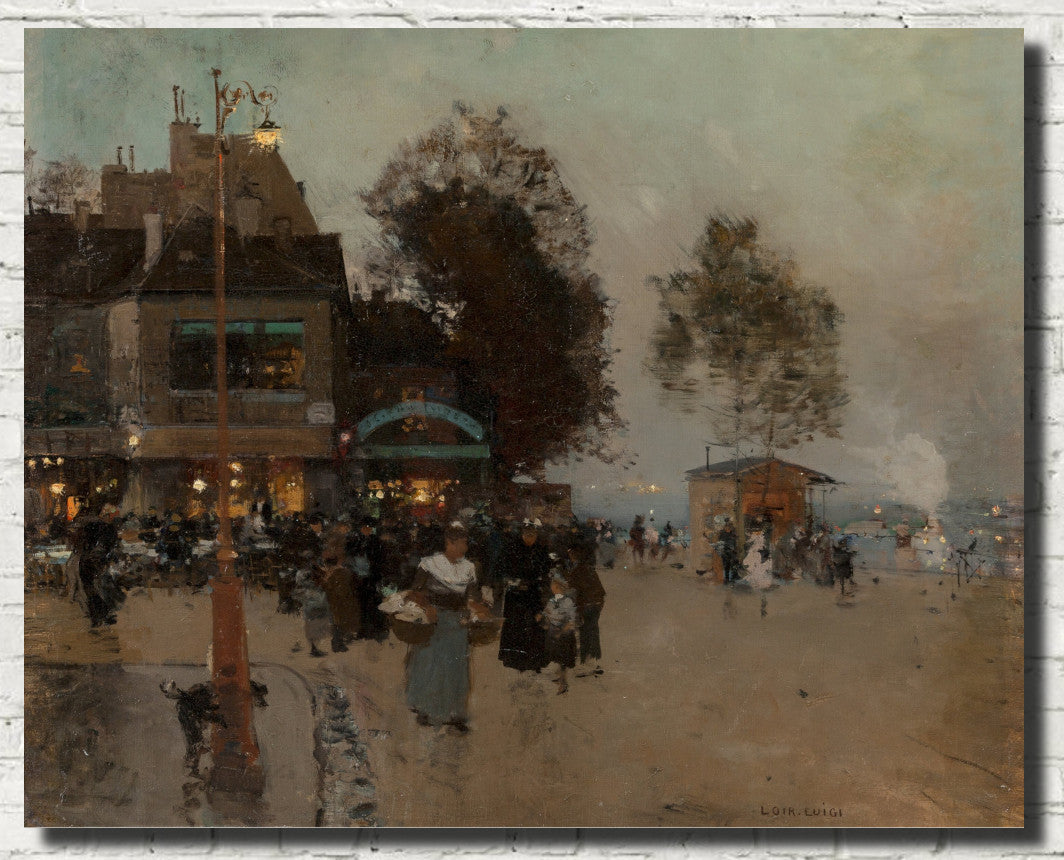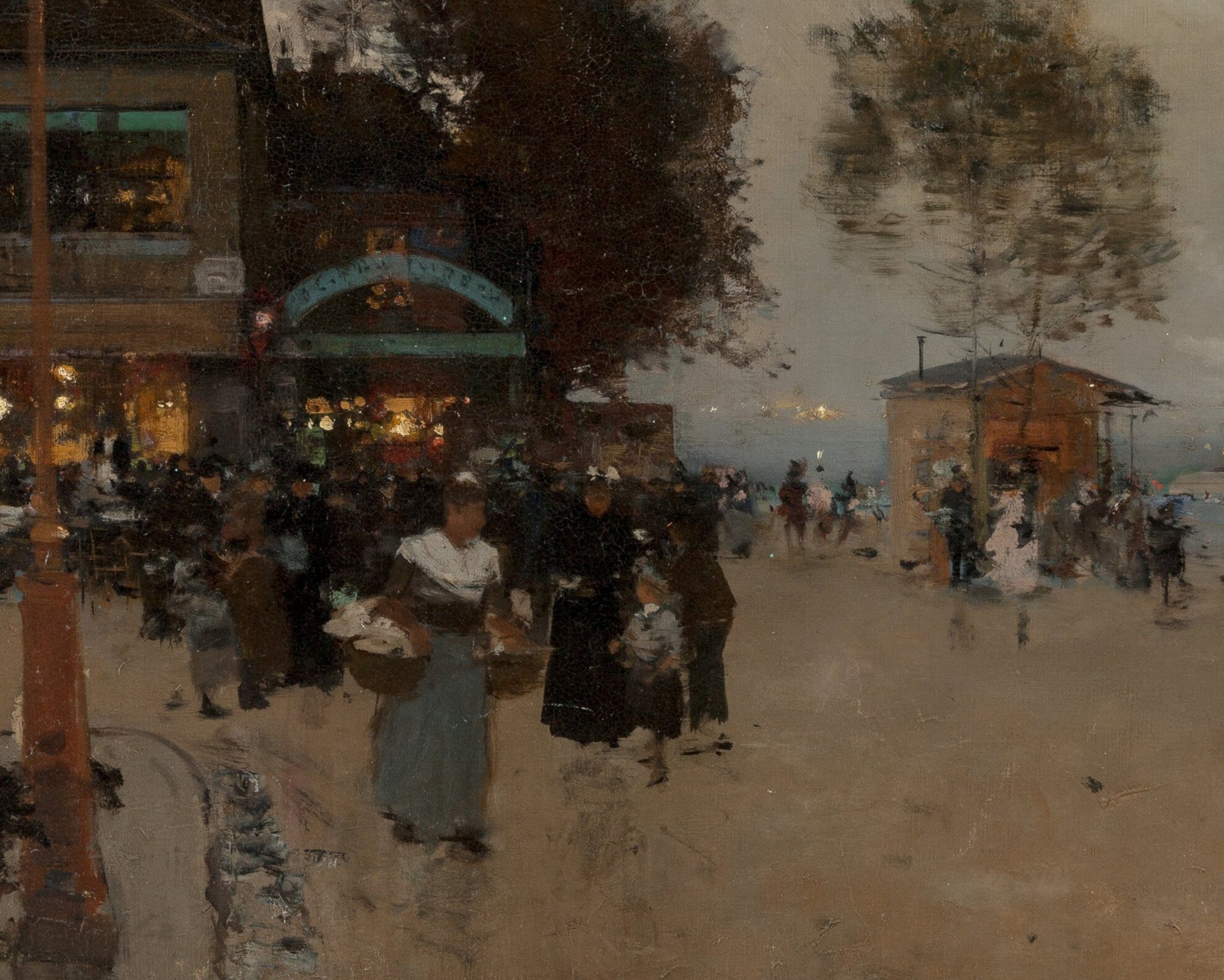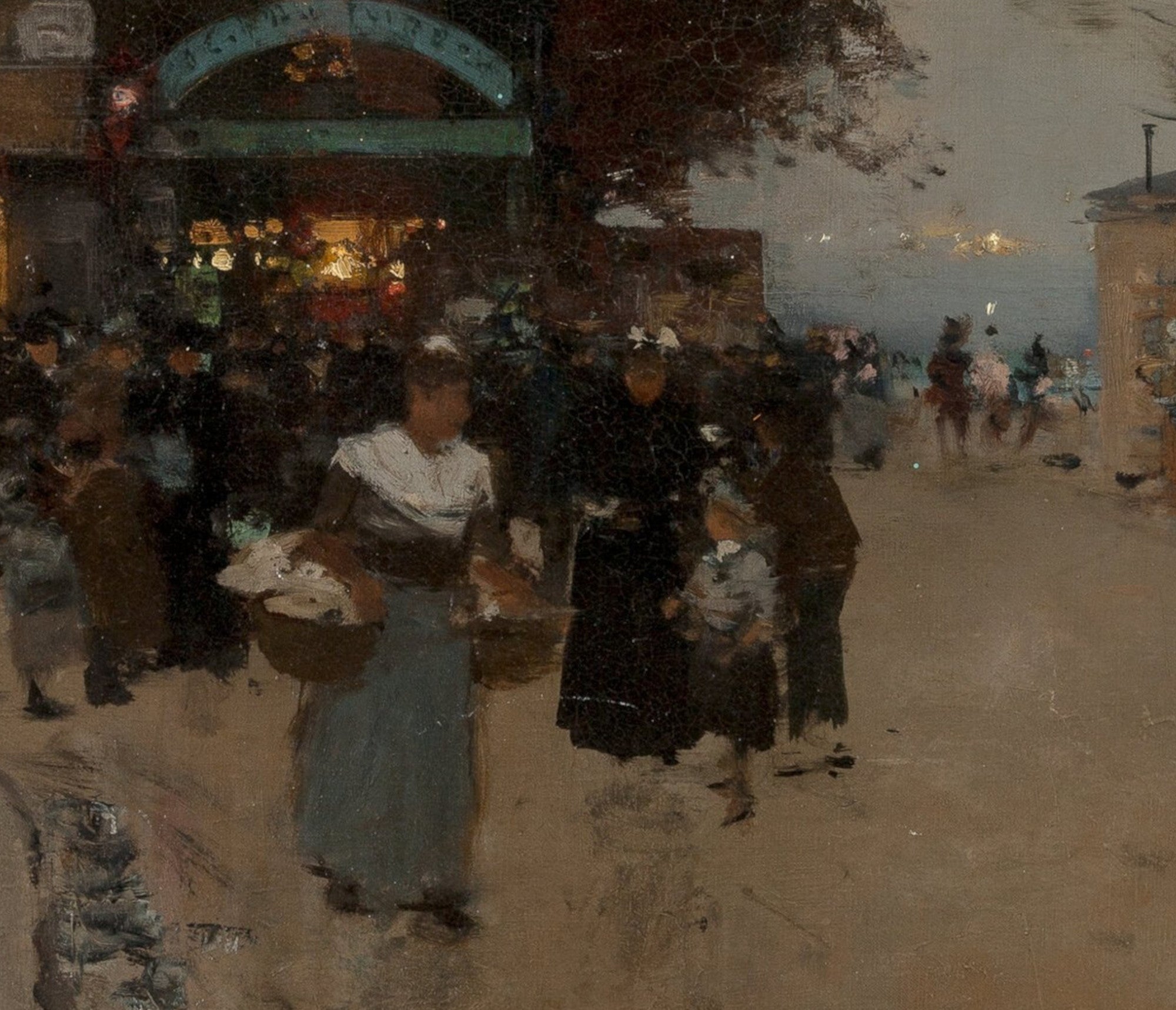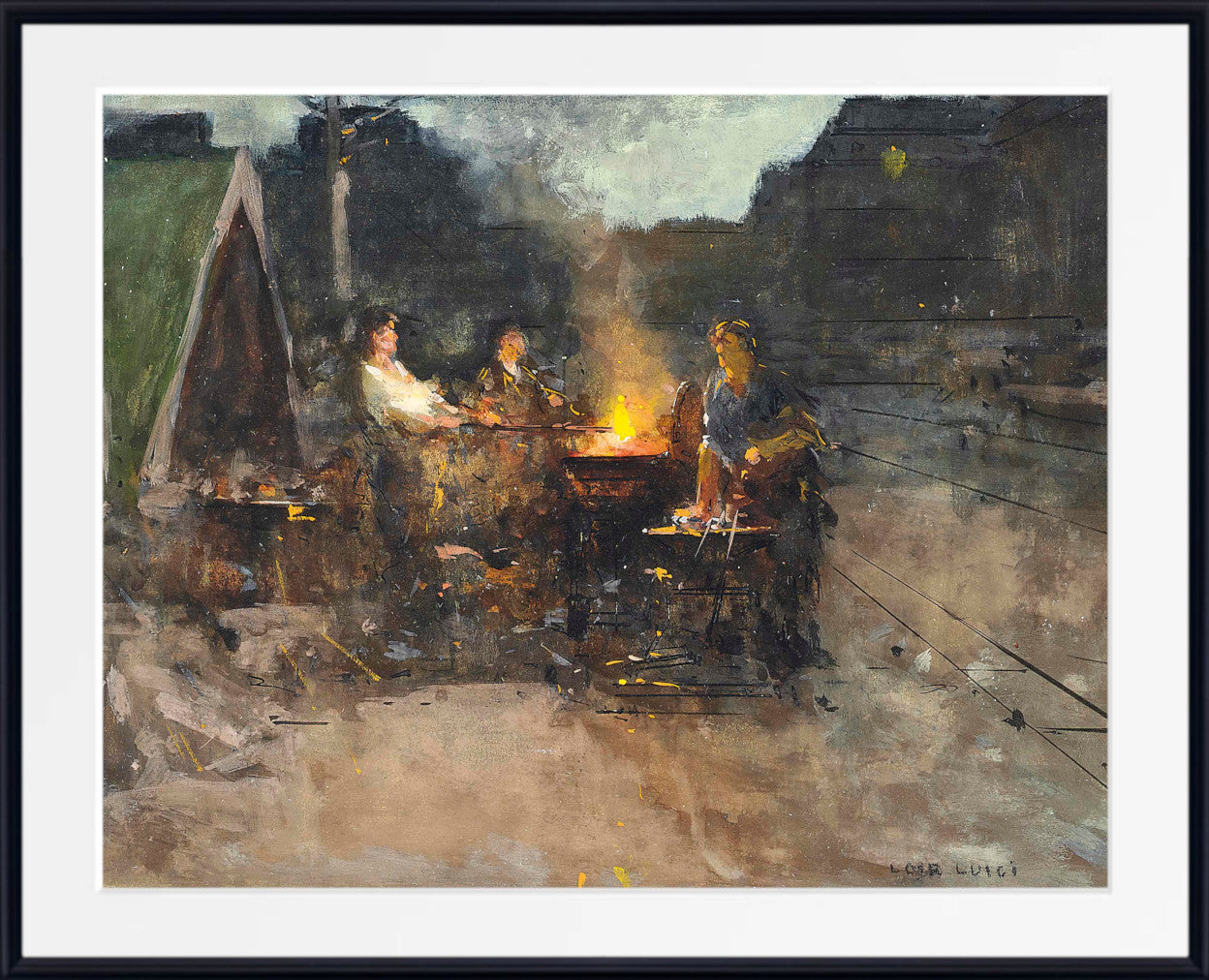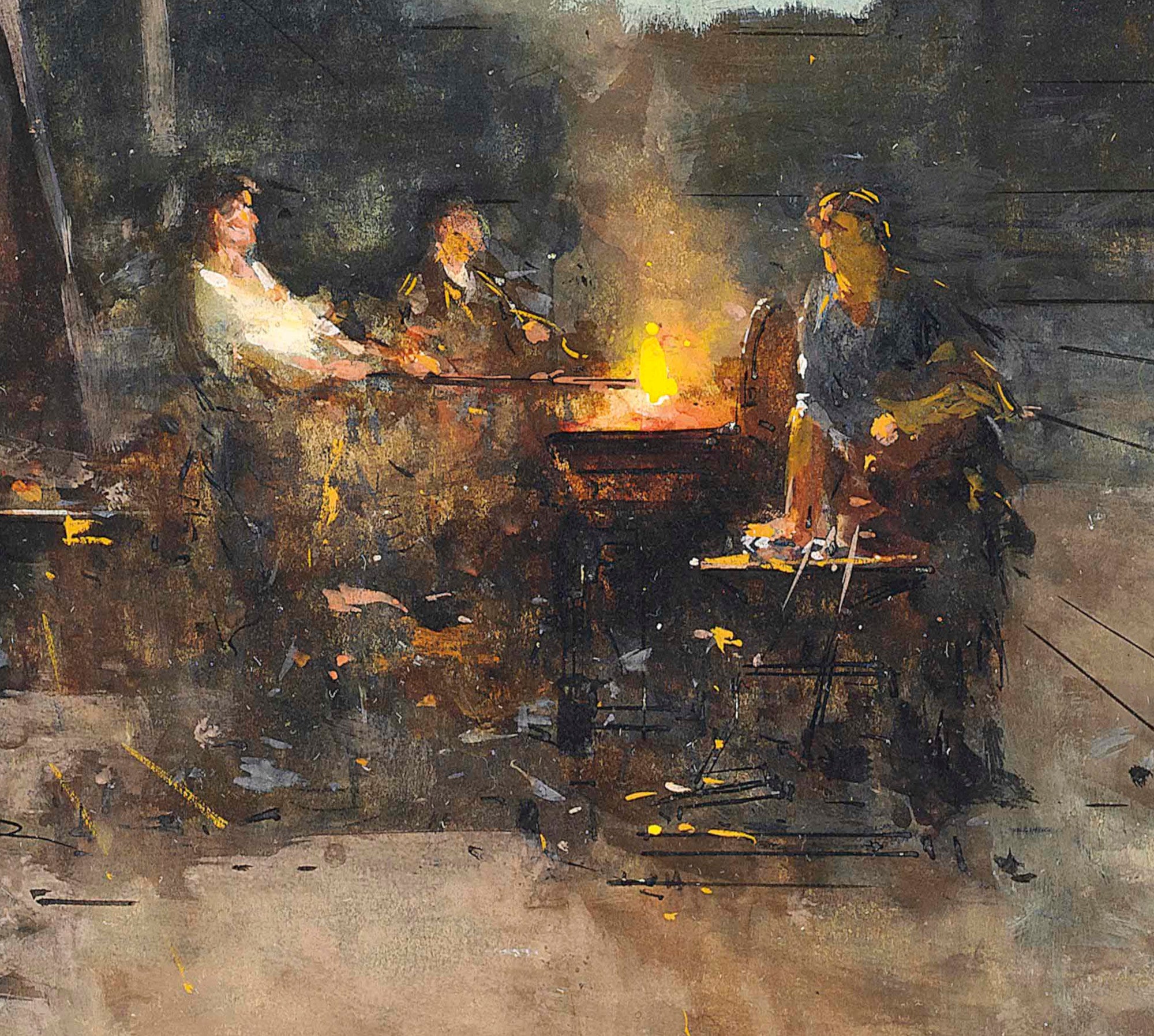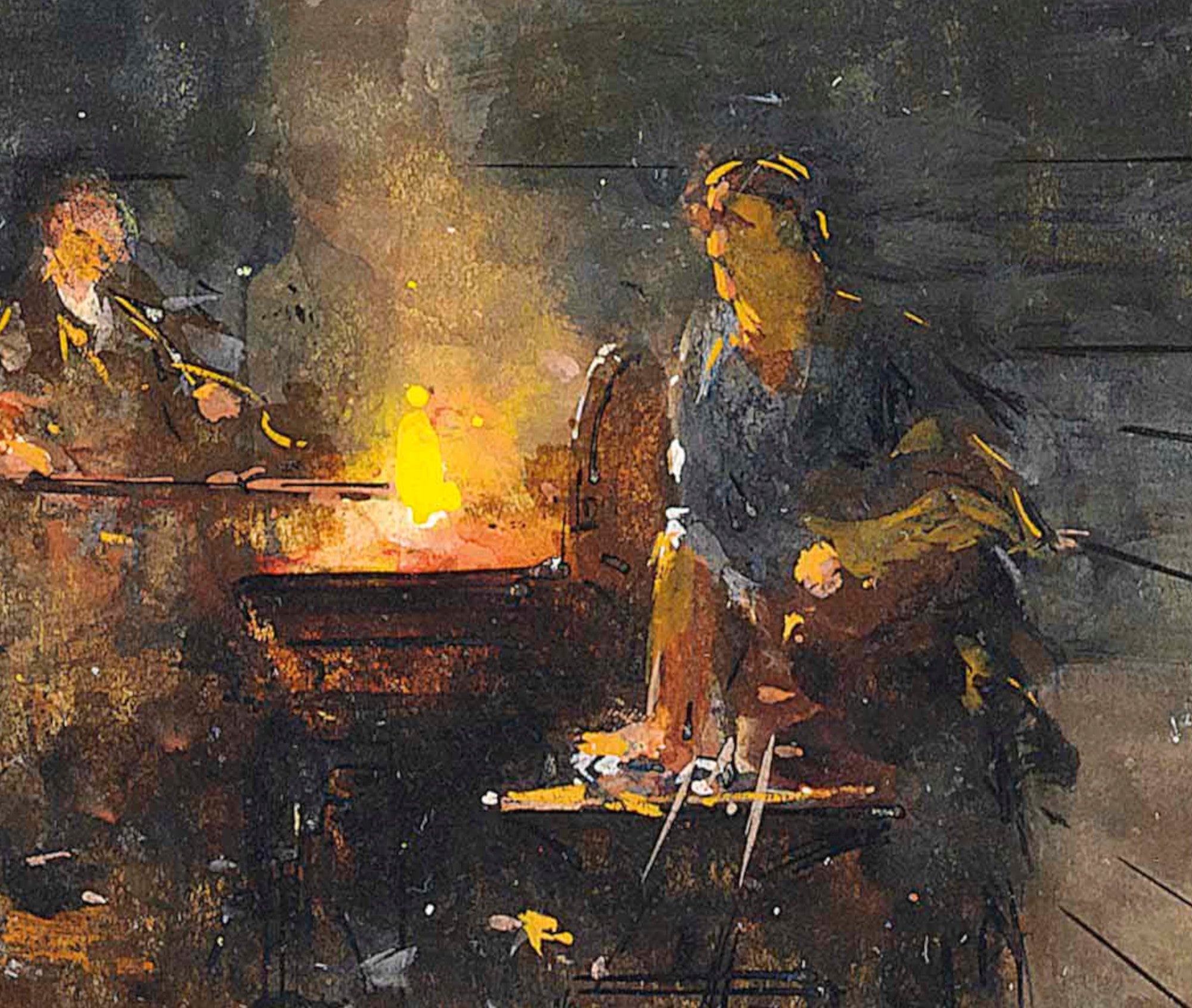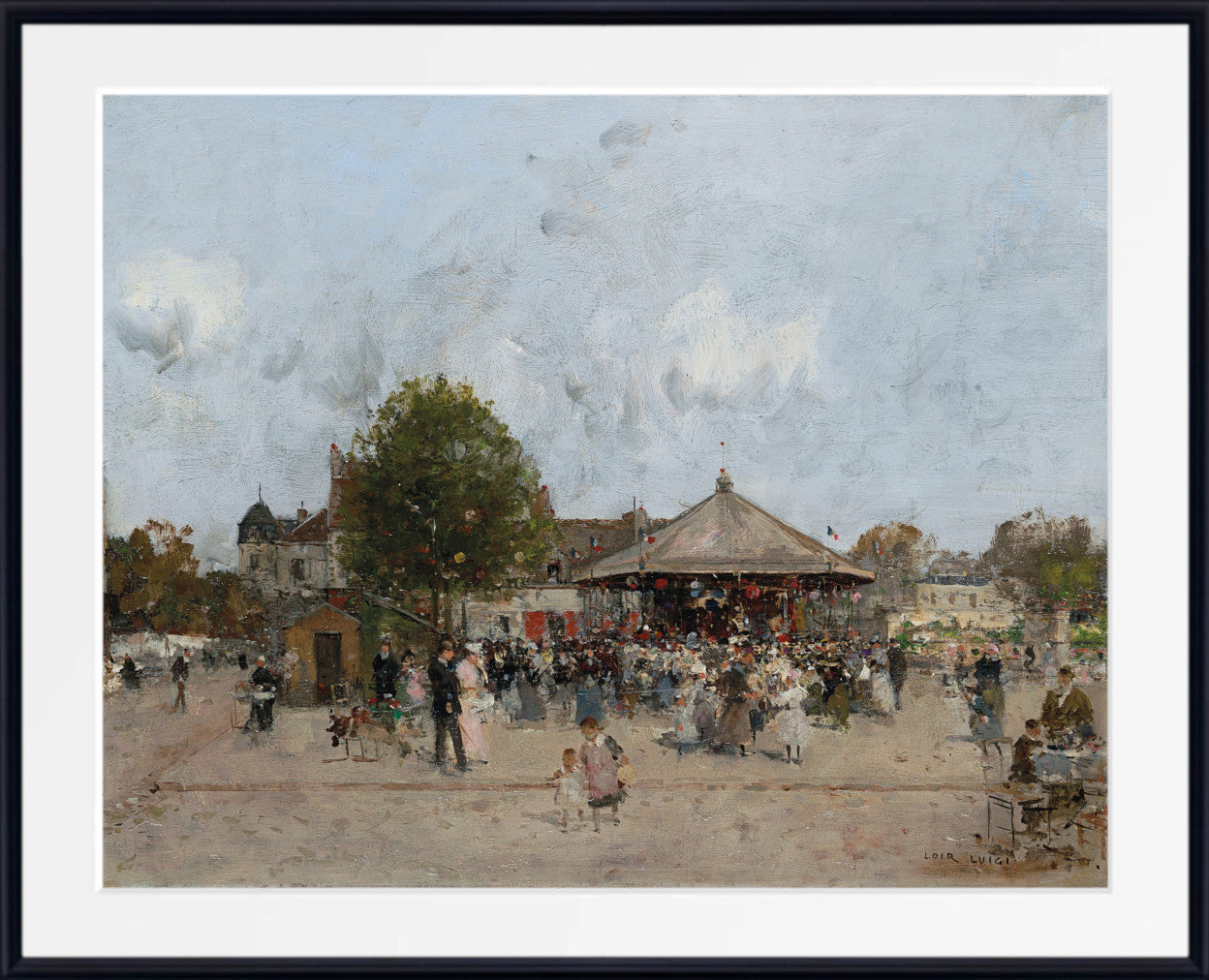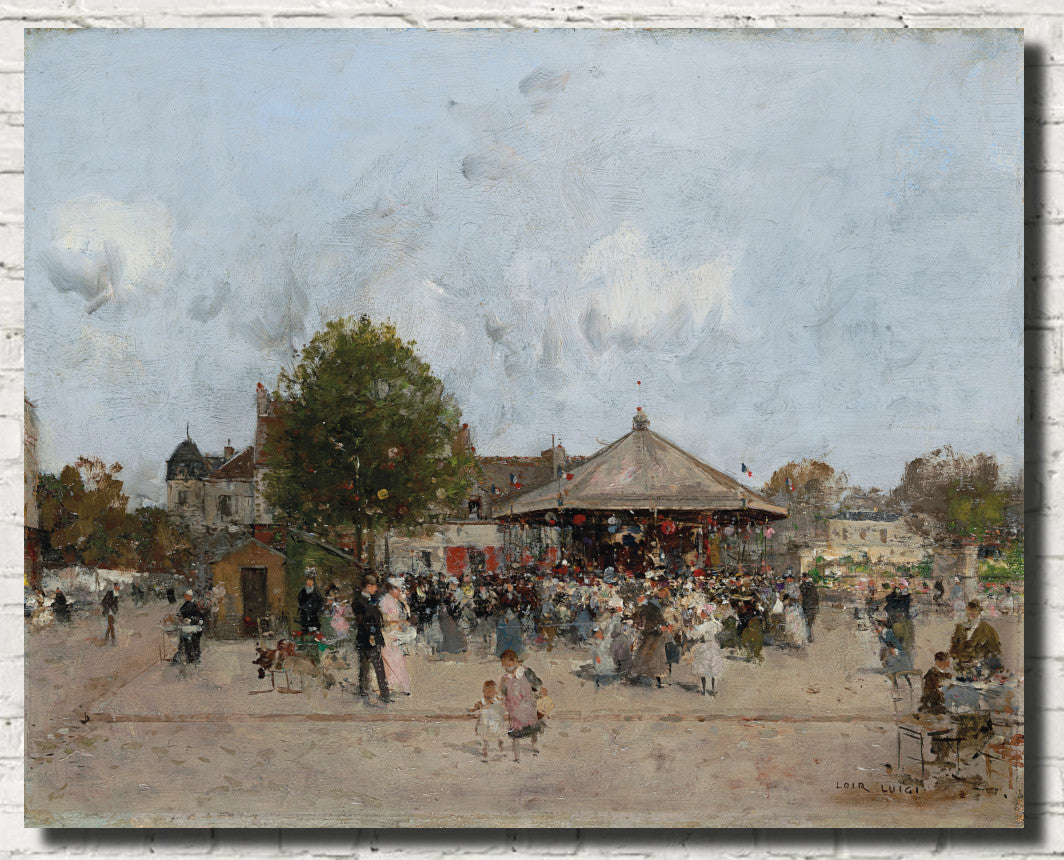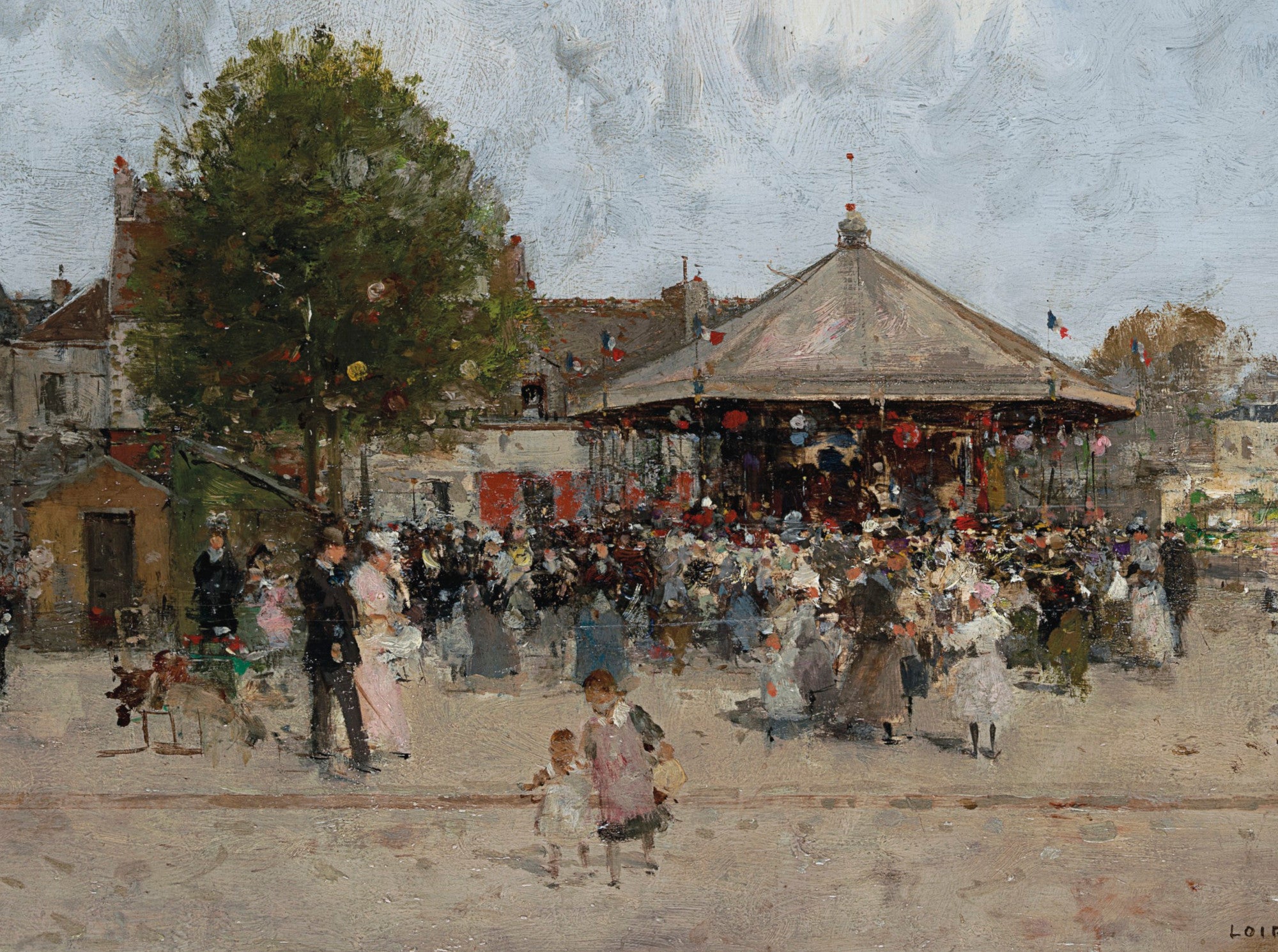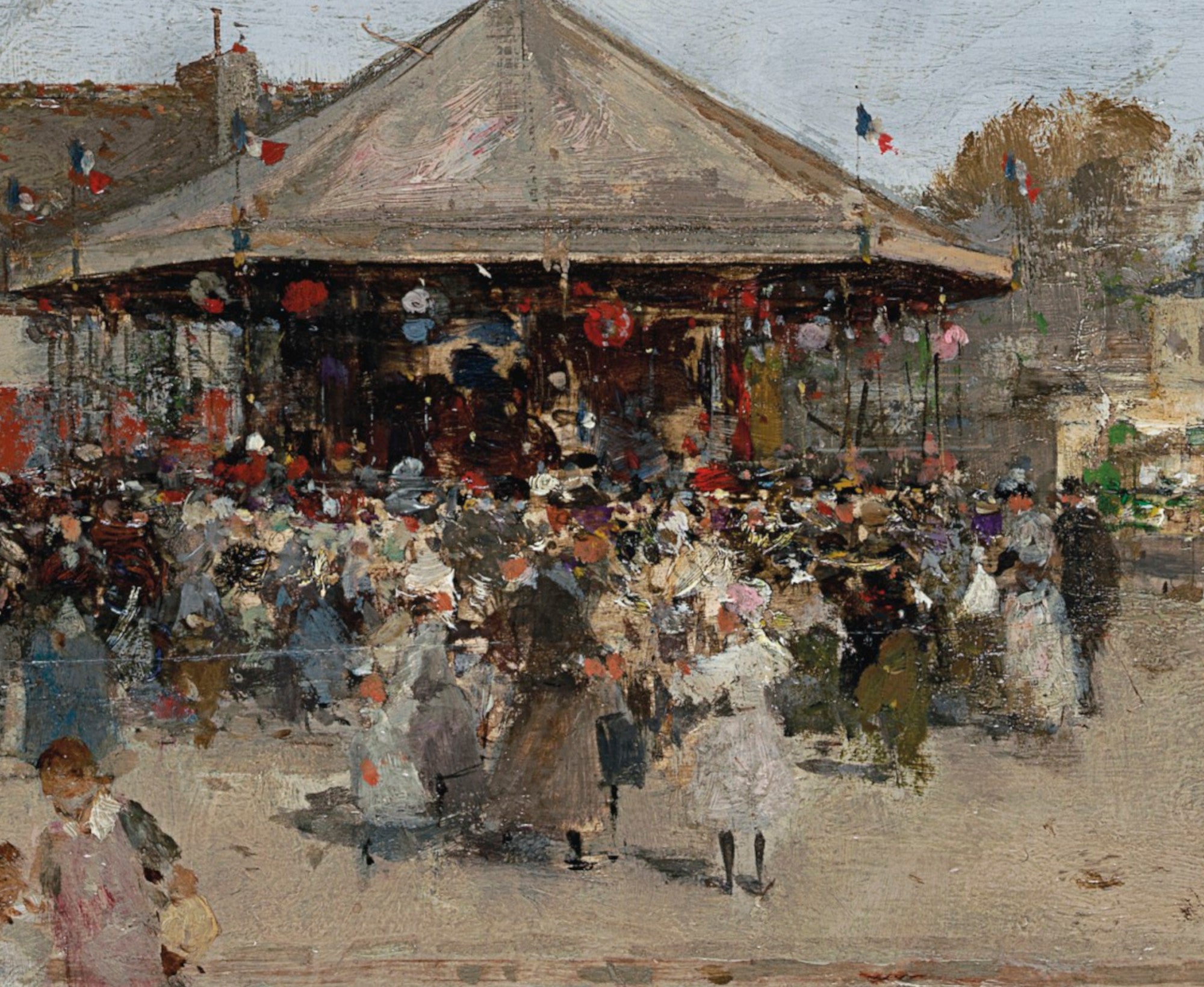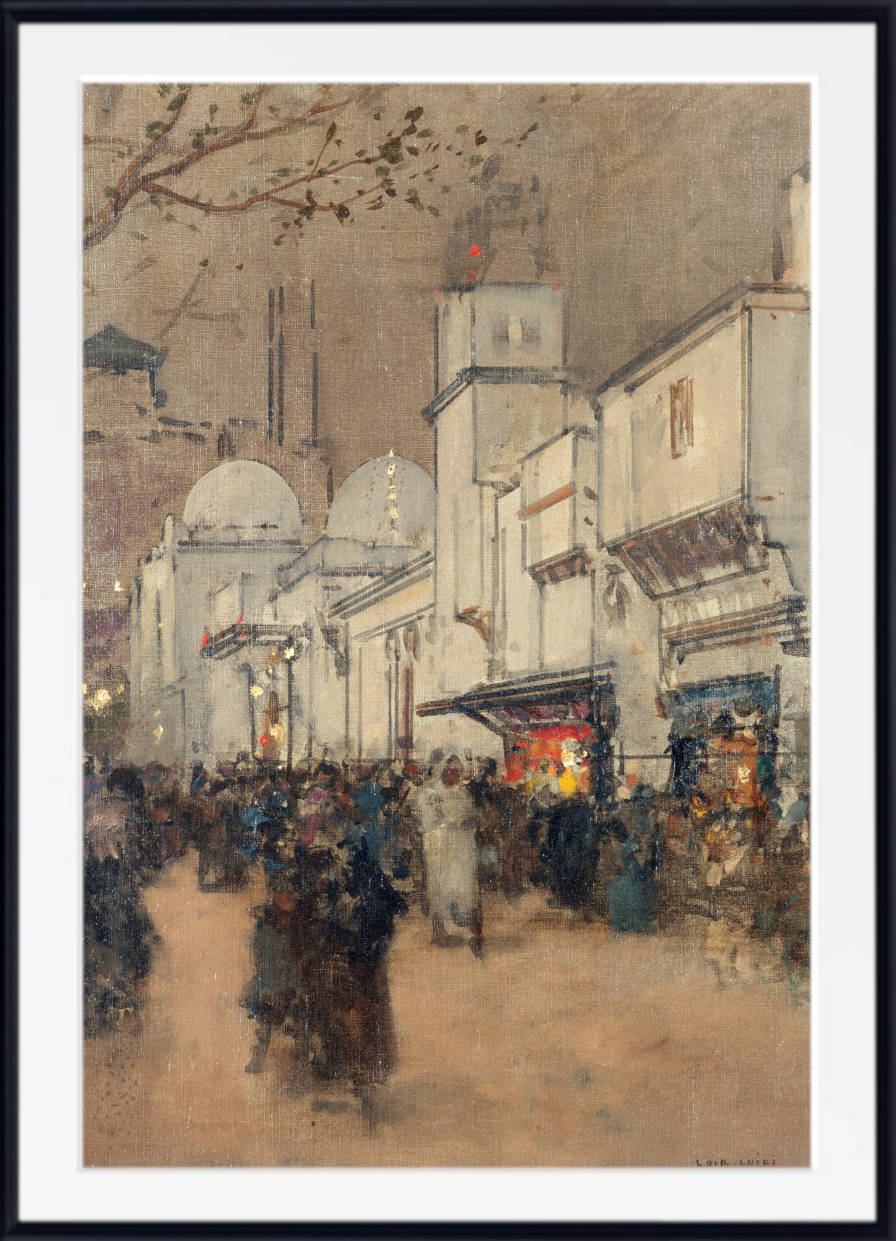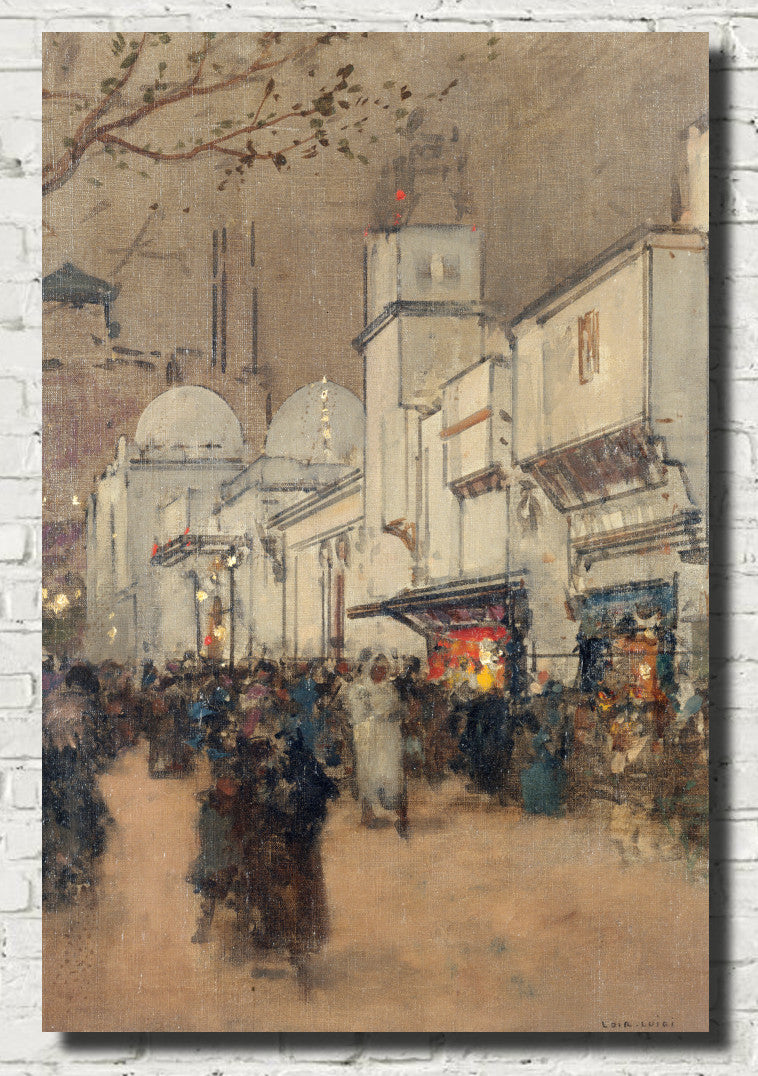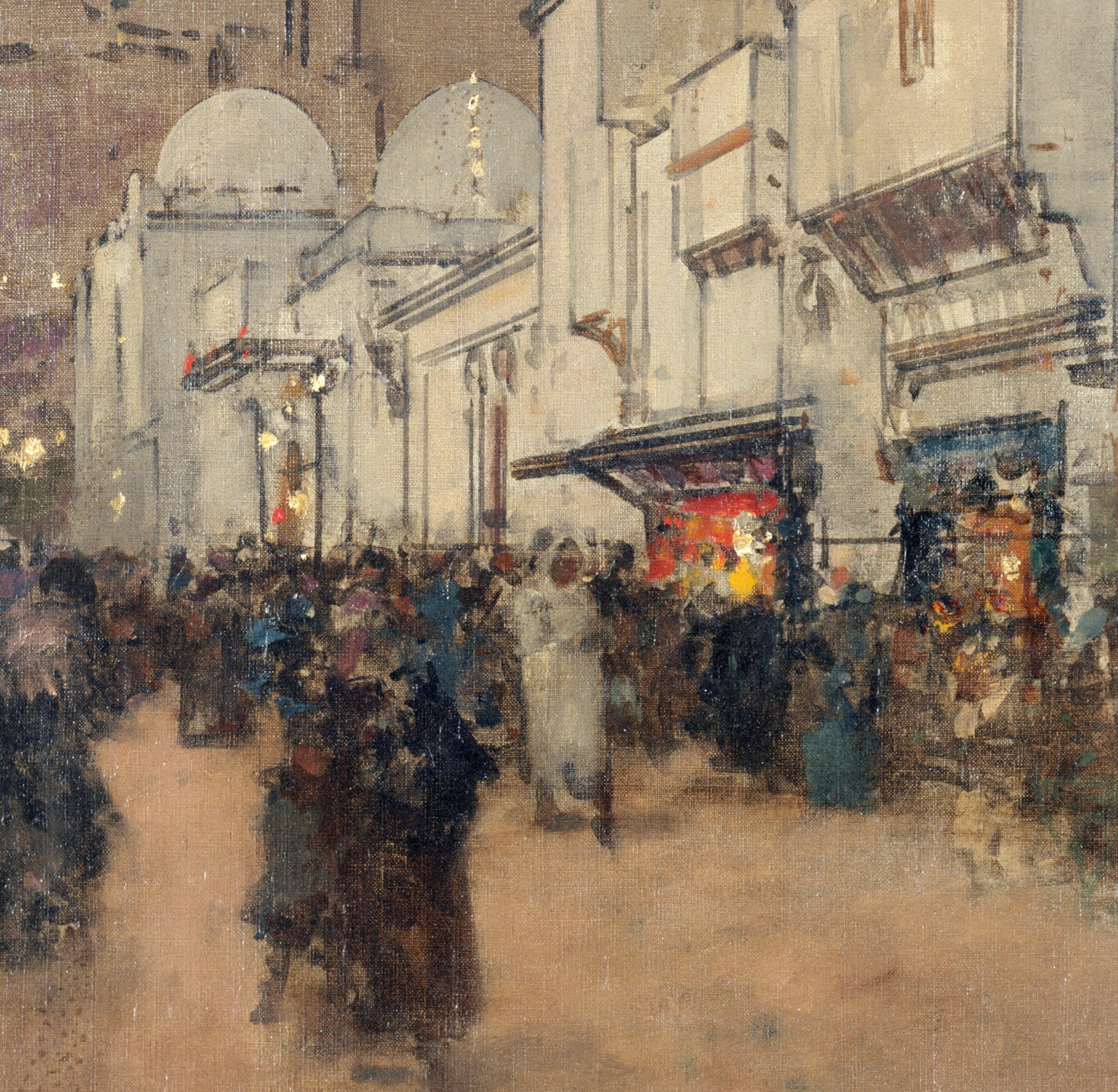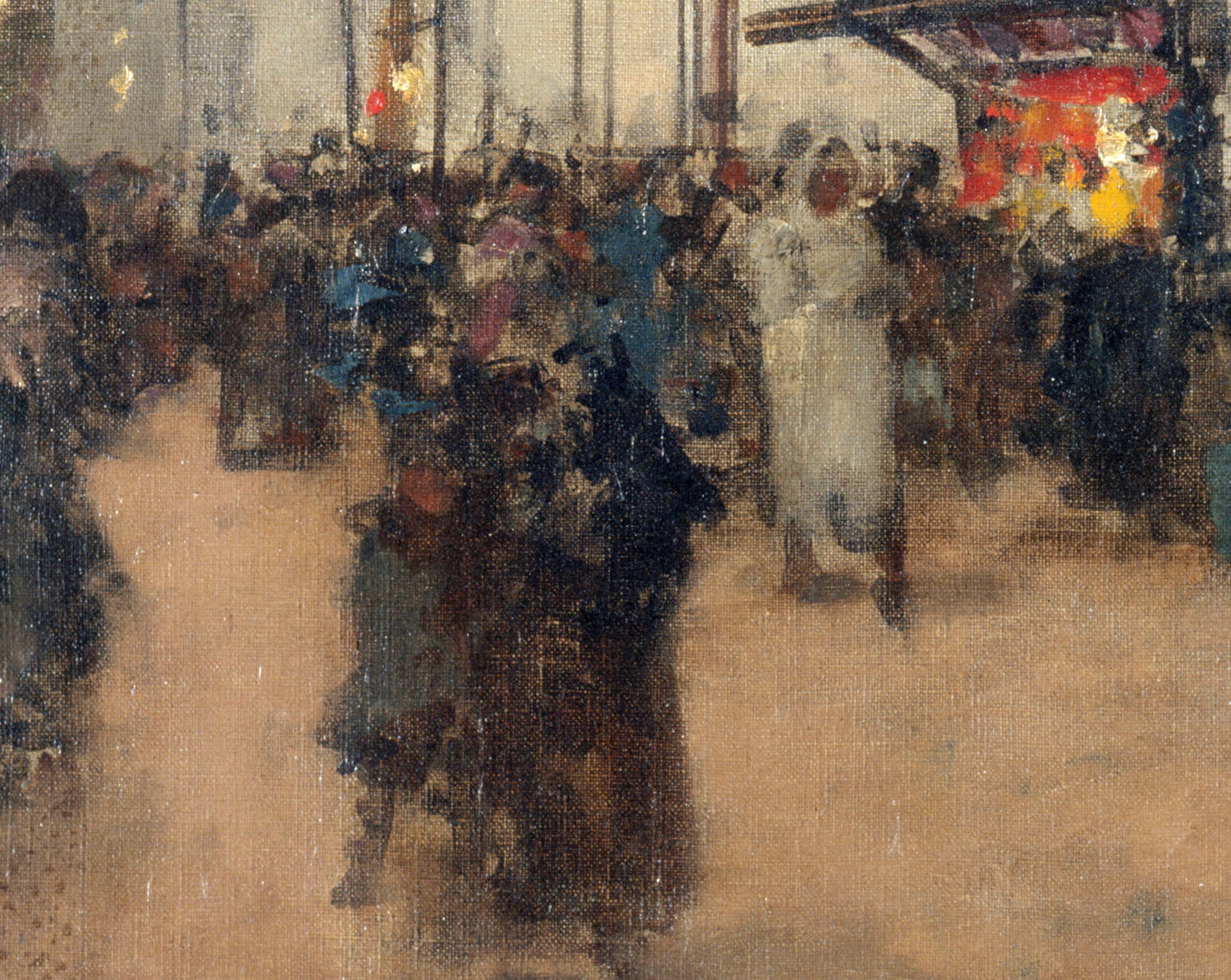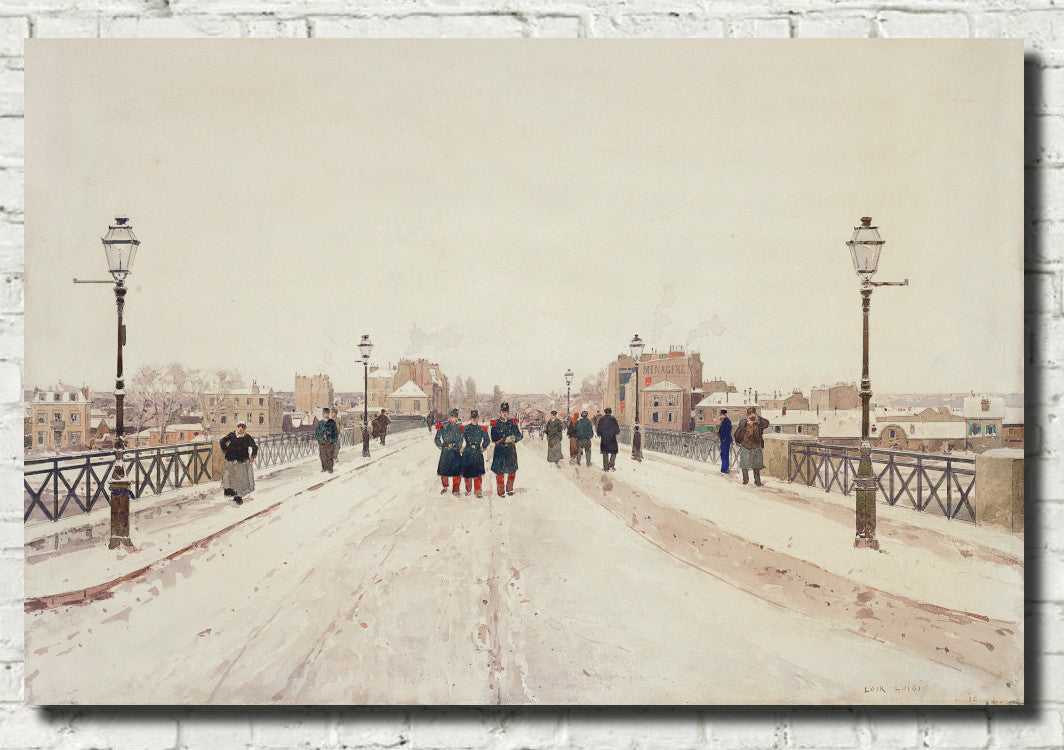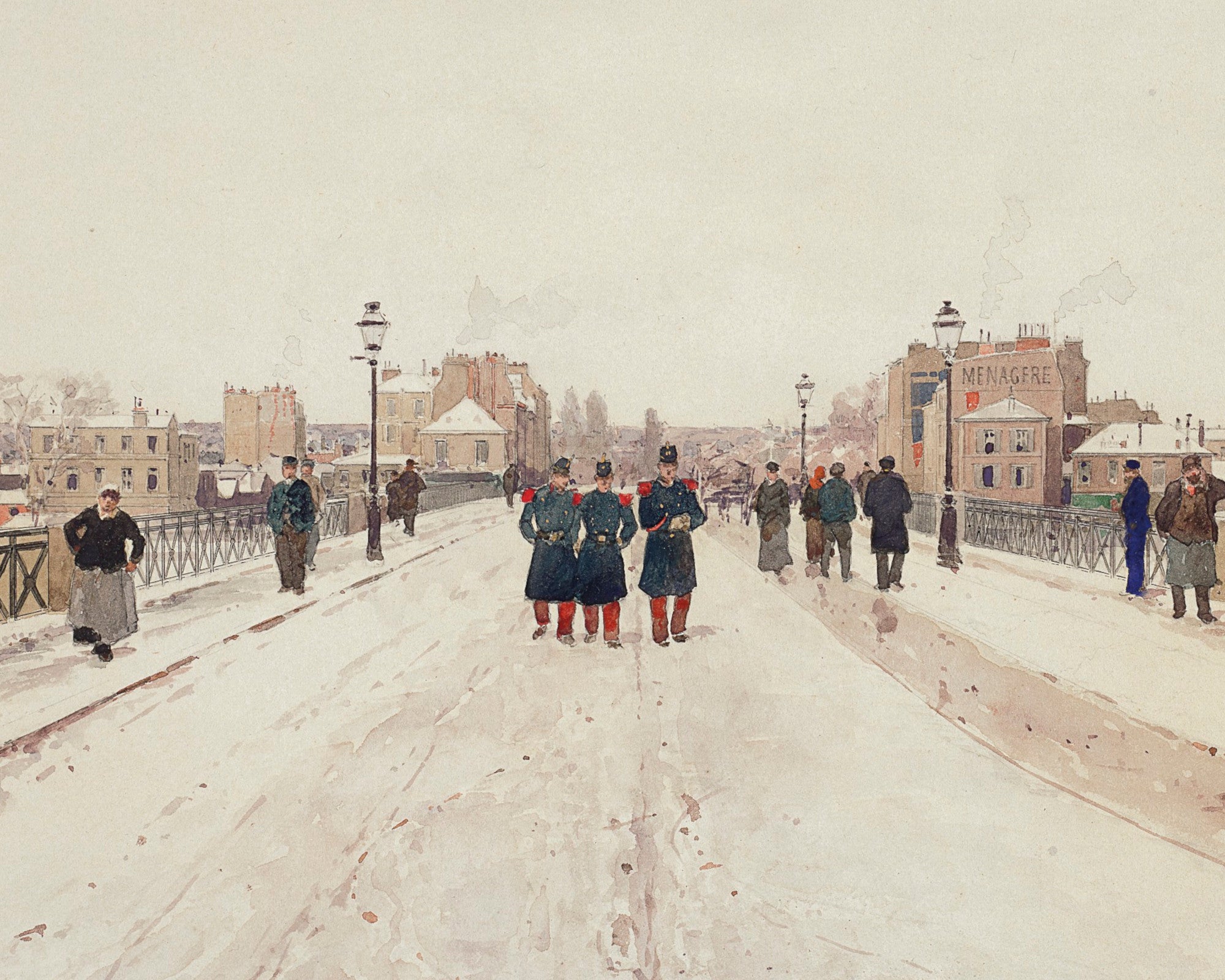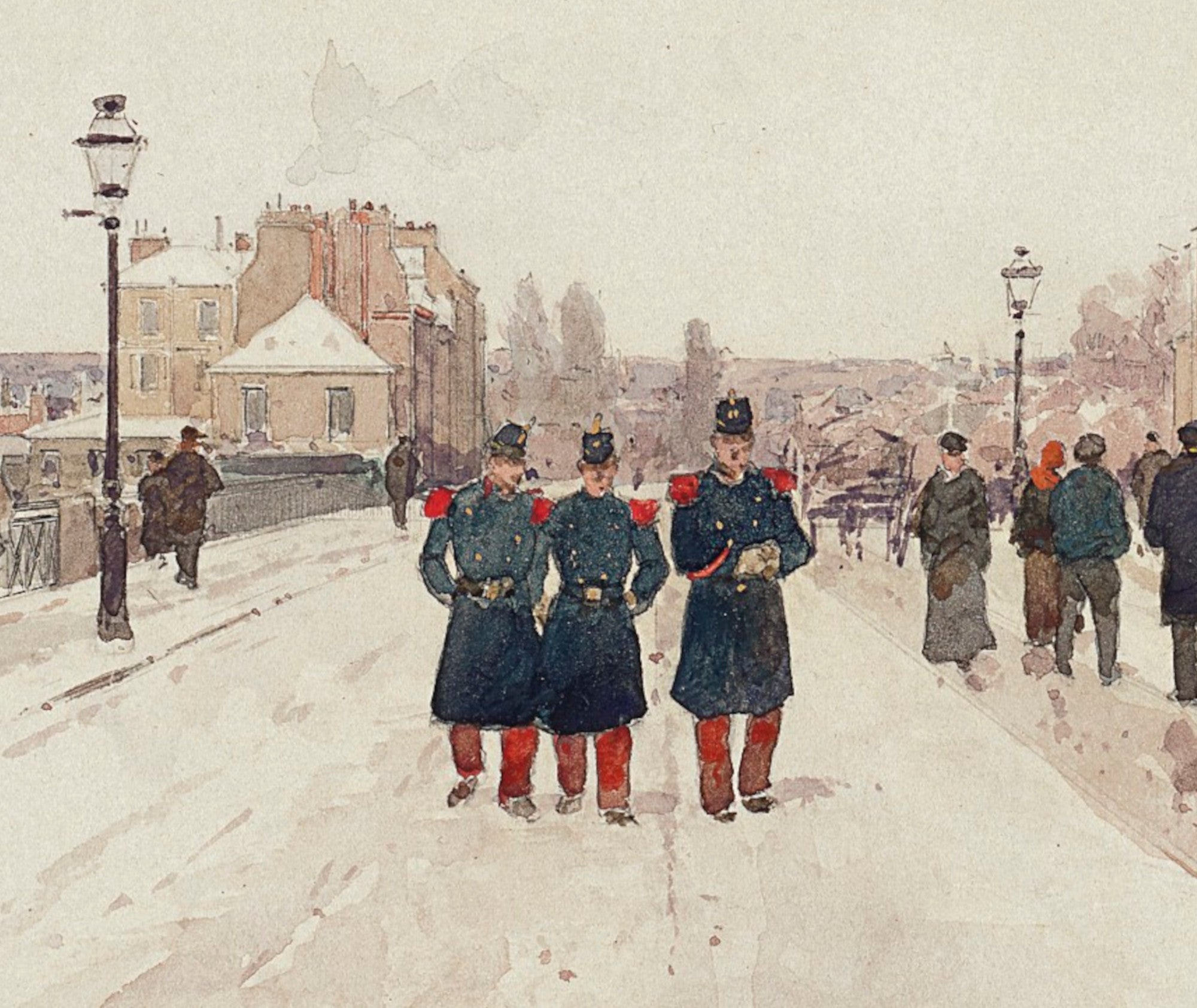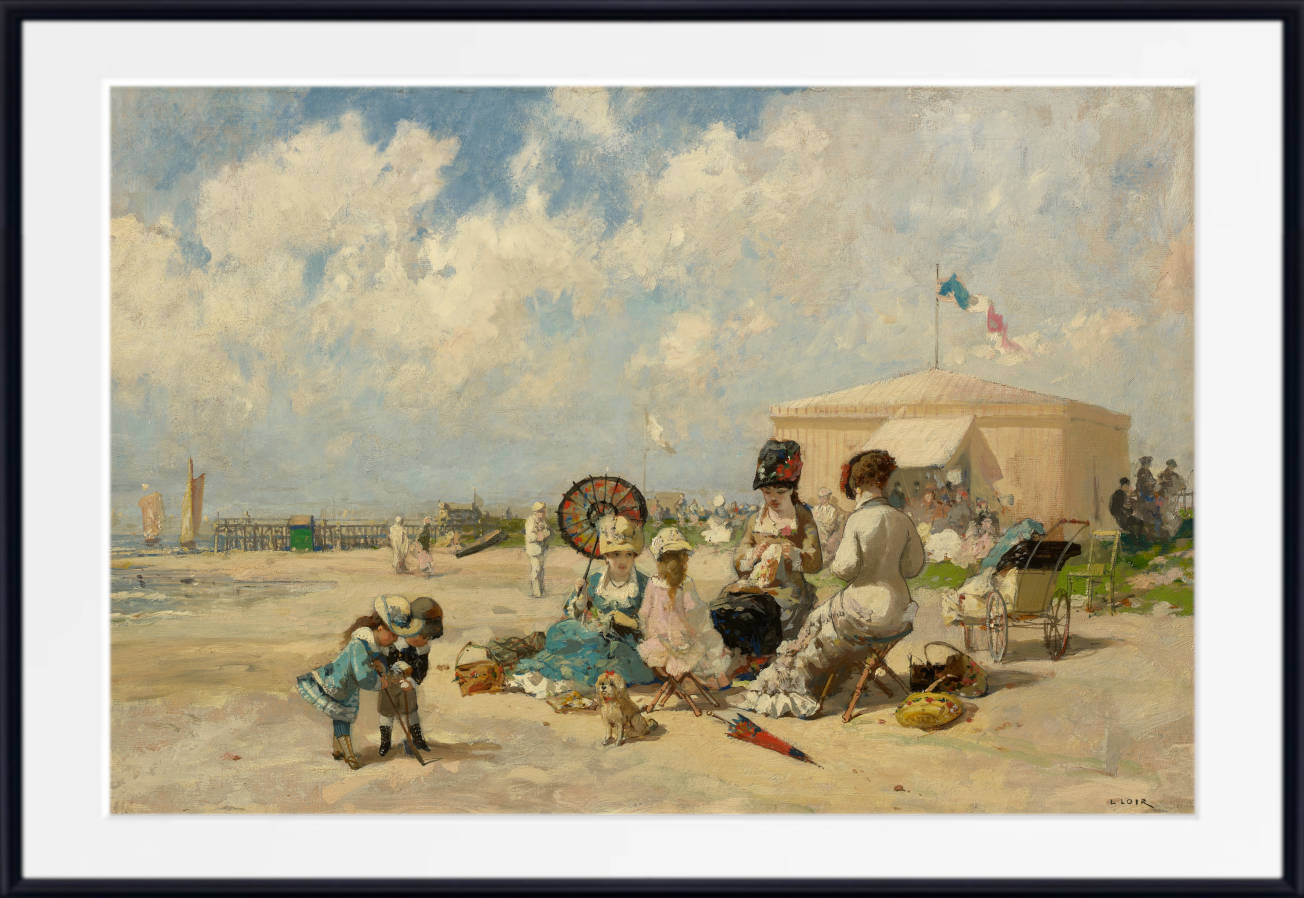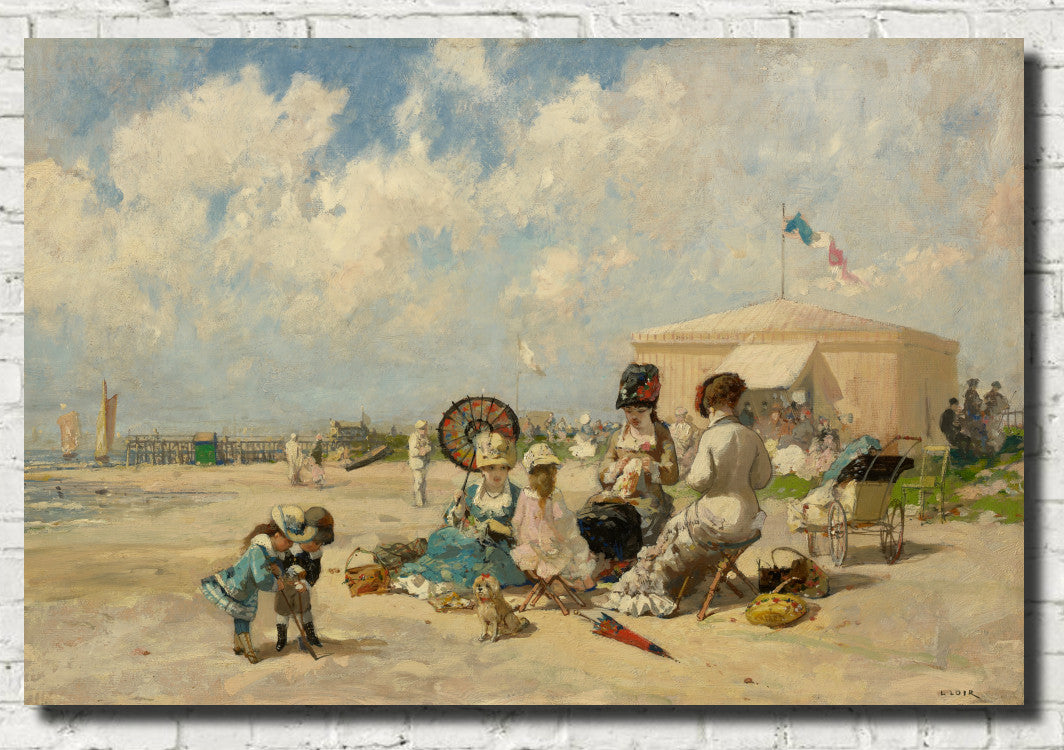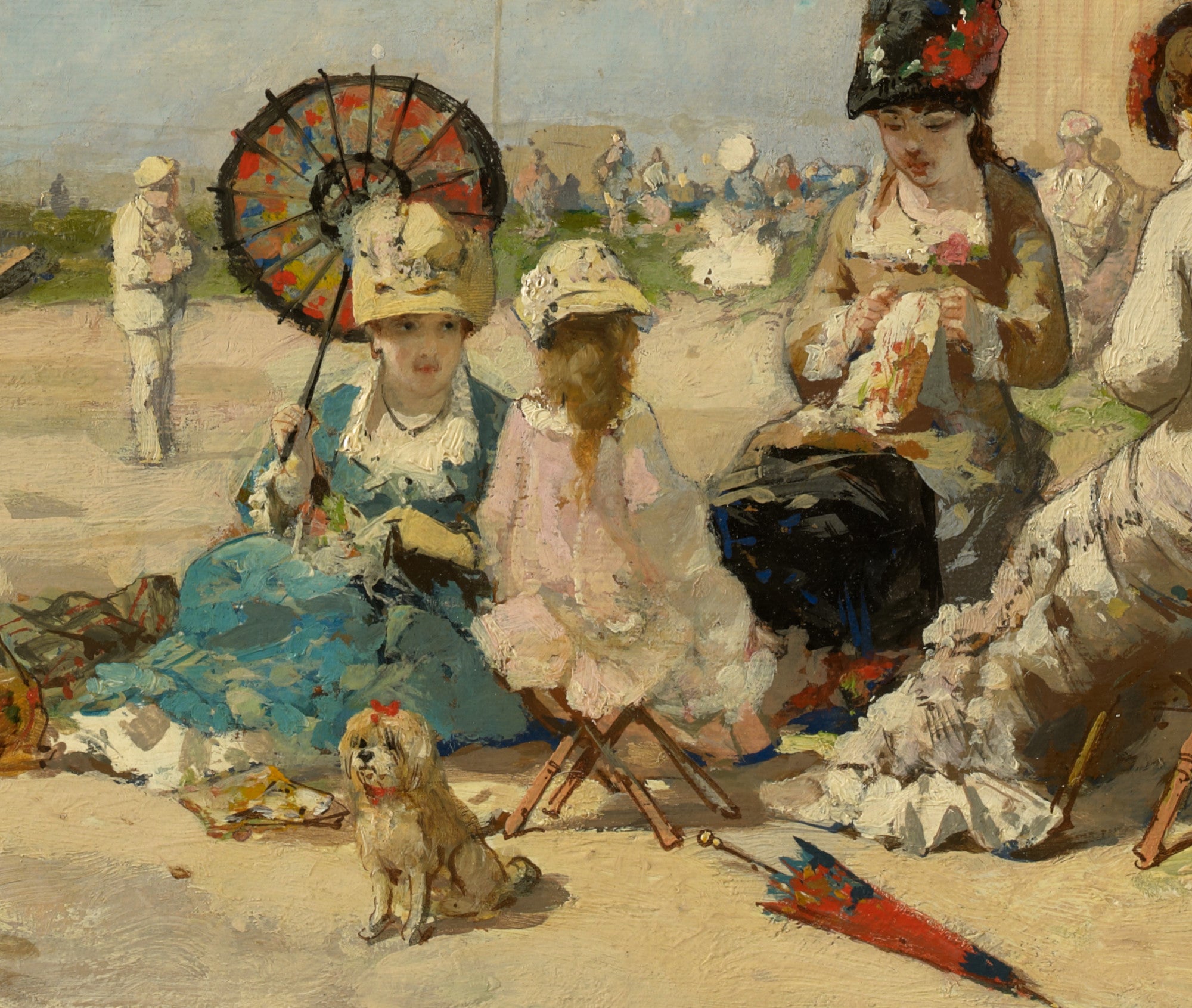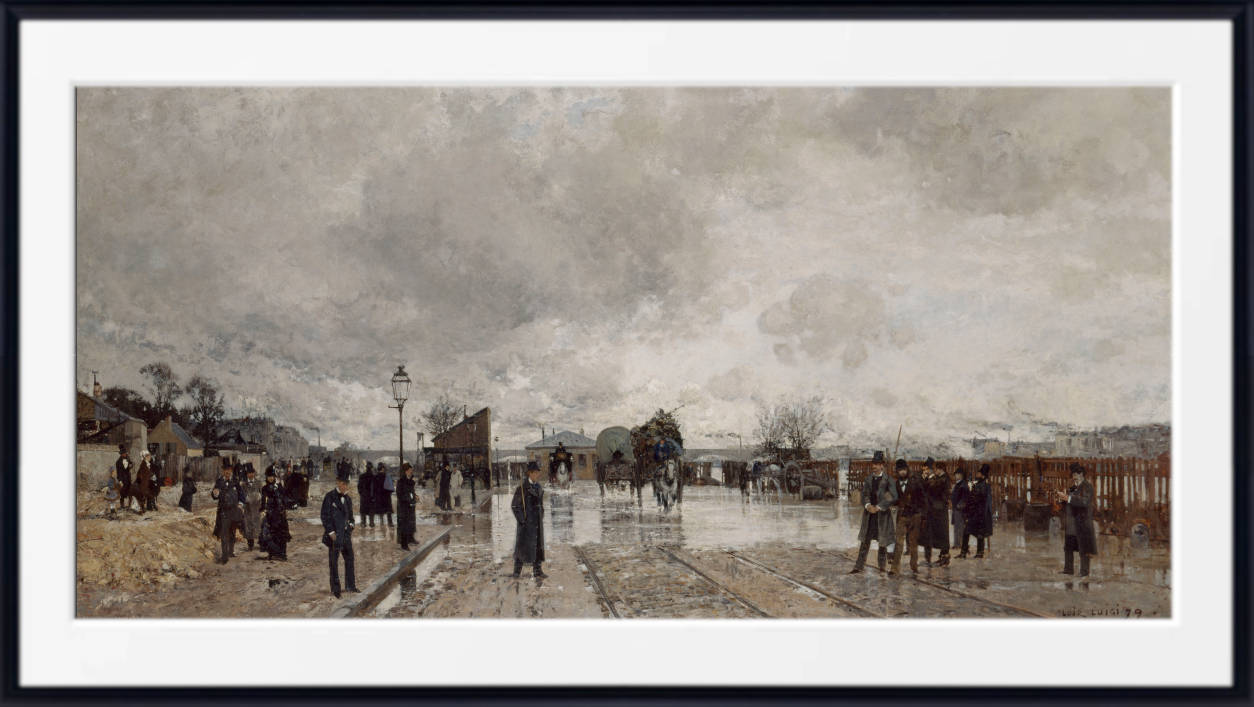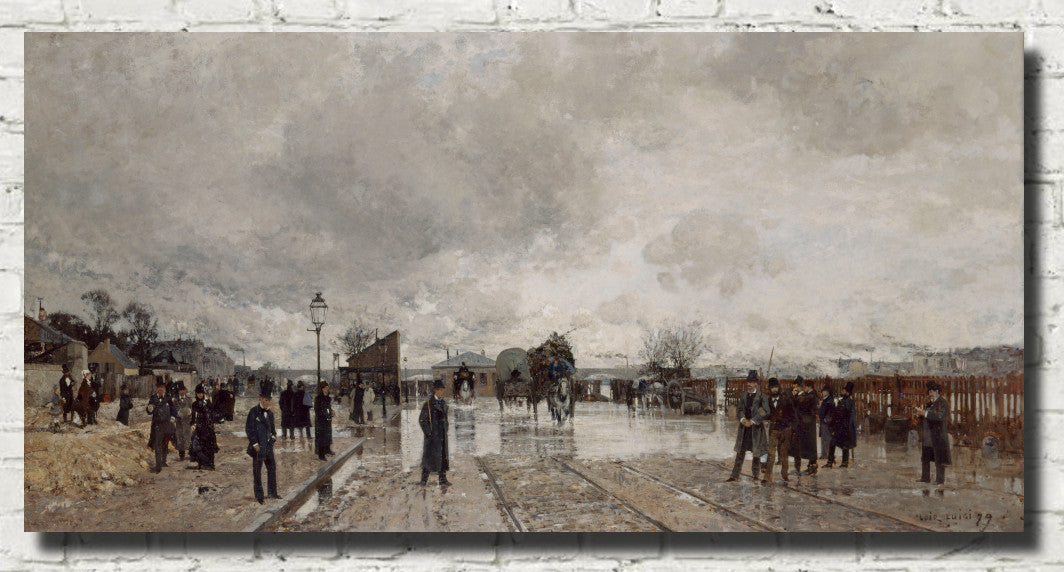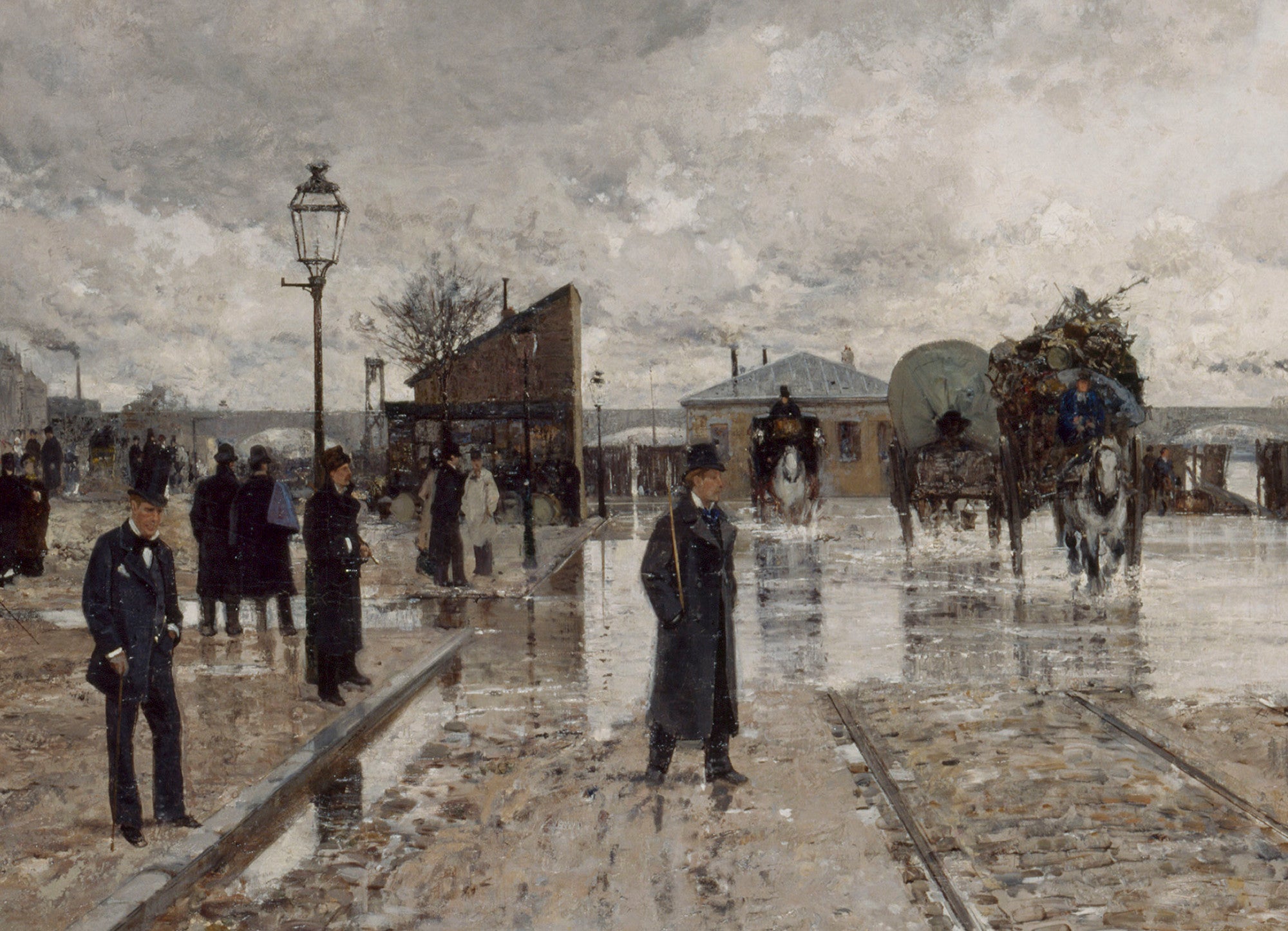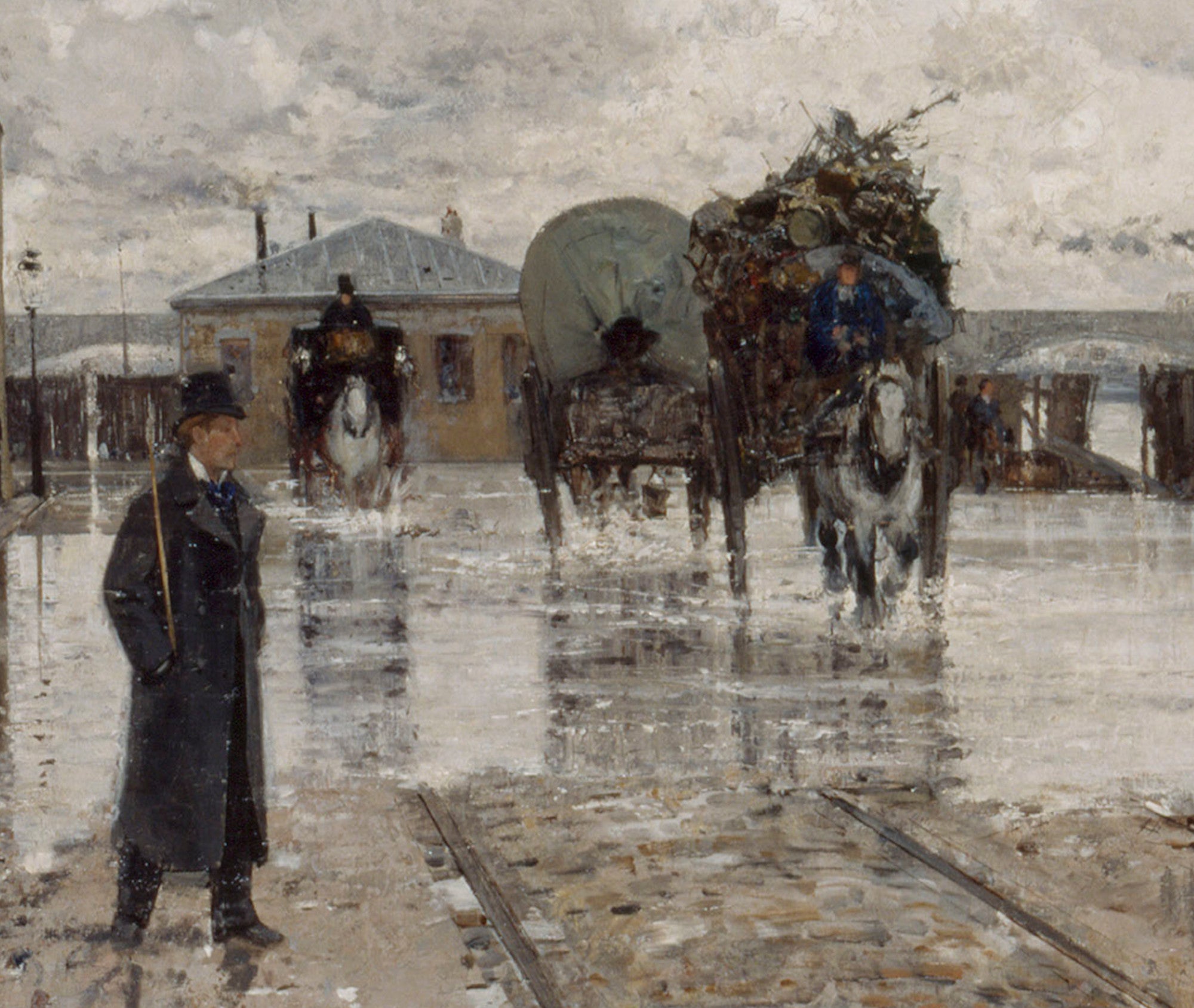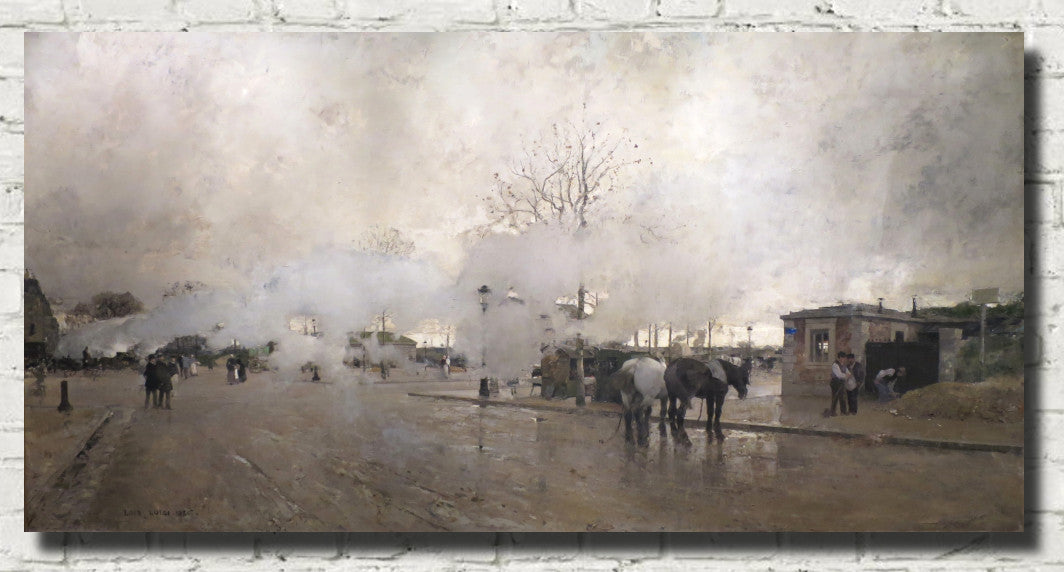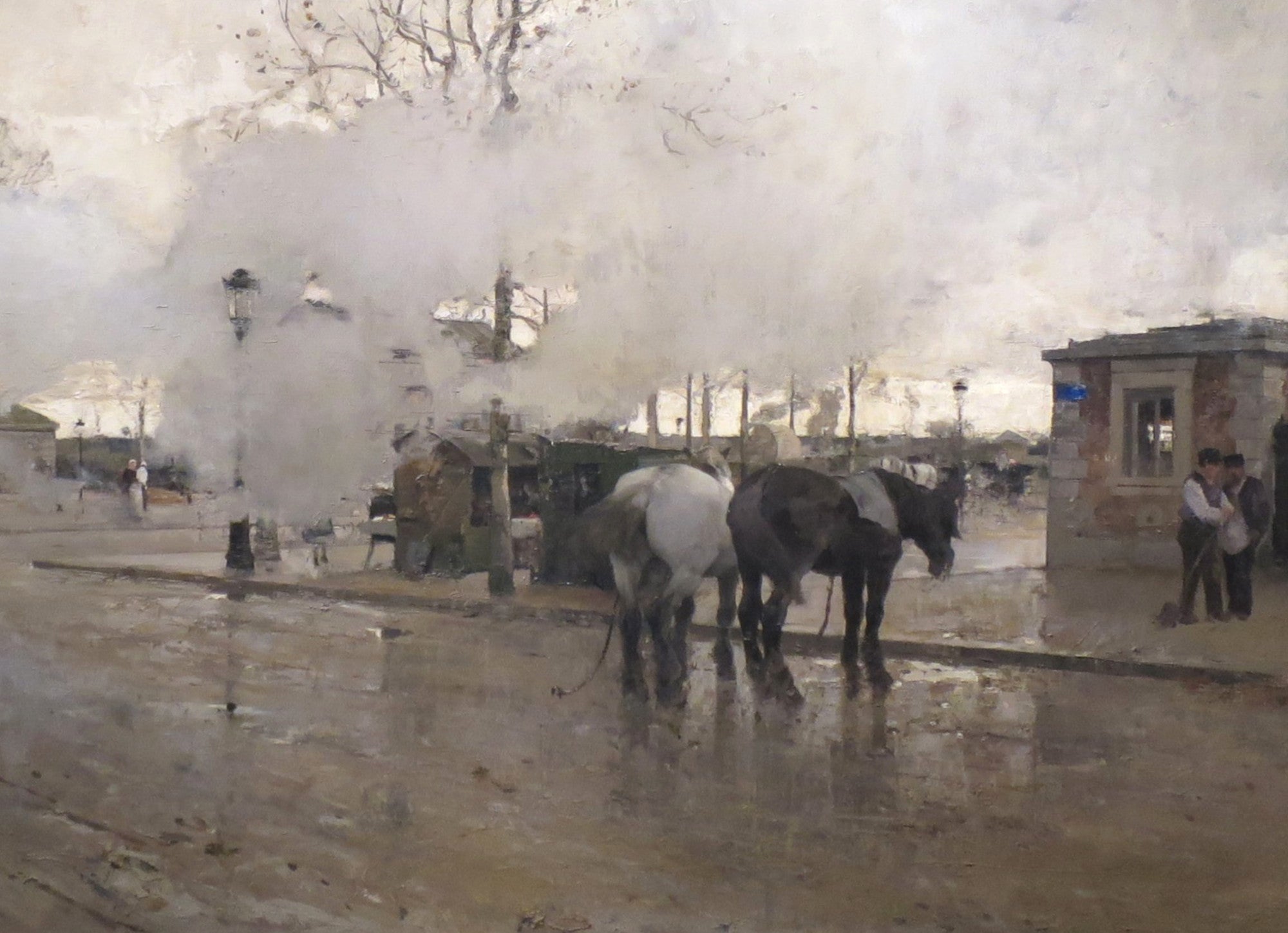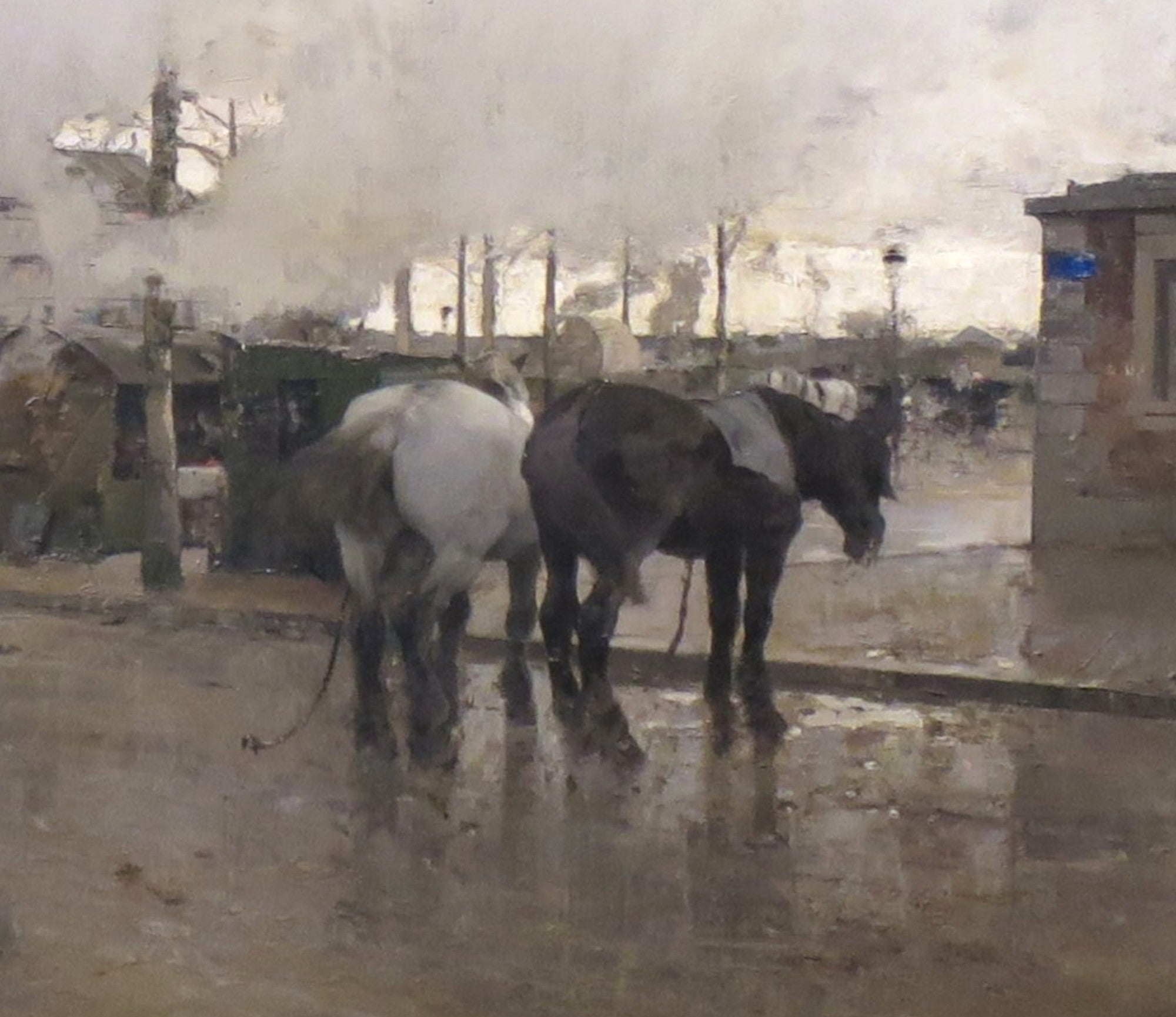Table of Contents:[hide]
Luigi Loir (1845–1916) was a master of French urban landscape painting, capturing the essence of Paris during the late 19th and early 20th centuries. His works vividly documented the changing face of the city, especially during the Belle Époque, when Paris was at the height of its cultural, architectural, and social transformations. Loir's attention to detail and his deep fascination with atmospheric conditions set him apart from many of his contemporaries, making his paintings both an artistic and historical record of Parisian life. His oeuvre focuses primarily on the daily life and architecture of Paris, rendered through a subtle and sensitive lens.
Early Life and Artistic Development
Born in Austria to French parents, Loir moved to Paris at a young age, where he trained at the prestigious École des Beaux-Arts. Although he initially studied under the decorative painter Jean-Baptiste-Ange Tissier, Loir soon found his own voice in capturing the city's fleeting moods, weather changes, and public festivities. His subjects often reflected the dynamic life of Paris, seen from the vantage point of a city undergoing rapid modernization. Loir’s technical skill, which combined detailed observation with an almost impressionistic rendering of light, atmosphere, and movement, allowed him to portray the modern city with a poetic sensibility.
"Fête de la place du Trône, Paris" (1878)
One of Loir’s most celebrated works, Fête de la place du Trône, Paris, depicts a vibrant street festival in the Place du Trône (now Place de la Nation) during a summer evening. The painting highlights Loir’s ability to capture the festive energy of Paris, with illuminated streetlights casting a warm glow over the bustling crowd. Flags flutter in the evening breeze, and the movement of people enjoying the celebration adds a sense of vitality. Loir's mastery of light and shadow is particularly evident here, as the fading sunlight is juxtaposed against the artificial lights of the fête, emphasizing the joy of urban life in a period of heightened civic pride. The detailed architecture of the surrounding buildings anchors the composition, showing Loir’s commitment to recording the cityscape as it appeared in his time.
"L'Avenue de Neuilly on a Winter Day" (c. 1895)
In L'Avenue de Neuilly on a Winter Day, Loir turns his attention to the quieter, more introspective side of Paris. The Avenue de Neuilly, shrouded in snow, appears tranquil and still, evoking a stark contrast to his vibrant festival scenes. This work exemplifies Loir's interest in atmospheric effects, particularly his sensitivity to how winter light transforms the city. The muted colors, dominated by whites and pale blues, reflect a crisp winter day, with the snow-covered street absorbing sound and activity. Figures in dark coats and hats are shown hurrying through the cold, adding a human element to the otherwise serene landscape. Here, Loir demonstrates his skill in portraying seasonal changes and the effects of weather on the urban environment, making the viewer feel the chill in the air and the quietude that often accompanies snow.
"Un coin de Bercy pendant l'inondation" (1910)
Perhaps one of his most dramatic urban scenes, Un coin de Bercy pendant l'inondation captures the devastation of the Great Flood of Paris in 1910, when the Seine overflowed its banks and submerged entire districts of the city. This painting offers a striking contrast to the festive and peaceful urban vistas for which Loir is often known. The streets of Bercy, a working-class district, are engulfed in murky water, and residents navigate the submerged cityscape in boats. The floodwaters reflect the overcast sky, while submerged buildings rise ominously from the dark waters. Loir’s attention to architectural detail is key here; the damaged structures are a poignant reminder of the disaster's impact on Parisian life. Yet, despite the destruction, Loir finds beauty in the stillness of the water and the perseverance of the residents. The painting becomes a testament to the resilience of the city in the face of catastrophe.
"Smoke on the Paris Circuit Line" (1895)
Smoke on the Paris Circuit Line represents Loir’s fascination with industrialization and the impact of technological advances on the city. In this piece, Loir captures a train moving along the Paris Circular Line, a major railway route that encircled the city. The painting is dominated by the image of thick black smoke billowing from the train’s chimney, blending into the gray sky above. This scene is emblematic of the new industrial age that transformed Paris and much of the Western world at the end of the 19th century. Loir’s portrayal of the train, with its metallic sheen and mechanical power, juxtaposed against the soft, organic forms of trees and houses, highlights the tension between the natural and industrial environments. The contrast of black smoke against the pale sky lends a dramatic quality to the painting, suggesting both the power and the pollution brought about by technological progress.
Legacy and Influence
Luigi Loir’s unique ability to convey the mood, atmosphere, and essence of Parisian life through his urban landscapes has secured his place as an important chronicler of Belle Époque Paris. His works are not merely visual records but are imbued with an emotional depth that captures the soul of the city during a time of rapid modernization and social change. By focusing on both the grand and the ordinary—festivals, snow-covered streets, natural disasters, and industrialization—Loir offers a multifaceted view of Paris, one that resonates with both the beauty and complexity of urban life.
While often associated with more commercially successful painters of the period, such as Jean Béraud or Édouard Cortès, Loir’s contribution lies in his distinct atmospheric renderings, which elevate his cityscapes beyond mere documentation. His work continues to serve as a reminder of a transformative era in Parisian history, where the interplay of light, shadow, and human activity formed the core of urban experience.
In today’s world, where cities continue to evolve and reshape themselves, Luigi Loir’s paintings stand as timeless depictions of a city forever in motion, balancing the old and the new, the joyous and the melancholic, in equal measure.






